#cloud native data engineering in New York
Explore tagged Tumblr posts
Text
In the dynamic and fast-paced world of business, staying ahead of the competition requires adaptability, efficiency, and scalability. This is where cloud computing comes in, revolutionizing the way organizations operate and manage their resources.
#aws data migration service#aws cloud migration#aws dms#trusted cloud native services company in USA#cloud native data engineering in New York#cloud native data engineering in USA
0 notes
Text
BOSTON and AMSTERDAM and SYDNEY, Might 2, 2023 /PRNewswire/ -- Zone & Co, the main supplier of scalable, cloud-based finance operations software program options constructed on the Oracle NetSuite platform, right this moment introduced the appointment of seasoned FinTech chief Thomas Kim as its new Chief Government Officer. With this, the corporate is able to speed up its development and quickly increase its worldwide footprint. Thomas Kim, CEO, Zone & Co Kim has an in depth background main progressive monetary technology corporations by means of hyper-growth phases. Most just lately he served as CEO of Enfusion, a worldwide chief in funding administration SaaS options, the place he was instrumental in main the expansion of the enterprise and its transition right into a public firm buying and selling on the NYSE (NYSE:ENFN). Beforehand, Kim was CEO at Tassat, a New York-based blockchain financial institution funds and tokenization agency at present facilitating over $1 trillion in B2B transactions, and was the COO of the Funding Engine Group at Bridgewater Associates, the world's largest hedge fund. He additionally served in management roles throughout Lehman Brothers and several other different monetary companies software program companies, together with UNX, TradingScreen, Macgregor, and Merrin Monetary/ADP. Kim succeeds Zone co-founder and CEO Derek Zanga, who led the corporate by means of its first ten years of fast development and can proceed to serve on the Board of Administrators."It has been an honor to steer the corporate to the place it's right this moment and I stay up for this new chapter," shares Zanga. "Thomas' spectacular management monitor document and deep business experience provide great worth to our prospects and group and equip us to double down on our world momentum. A real milestone in Zone's evolution, that I am very pleased with and enthusiastic about.""I've seen first-hand how the right combination of software program innovation coupled with world-class shopper engagements designed to unravel actual enterprise issues can have significant impression," stated Kim, CEO at Zone. "I'm extremely humbled to have the chance to affix the group on this distinctive and thrilling journey. To speed up progressive change at scale and allow simplified finance and accounting operations throughout business segments across the globe."With Kim on board, Zone will hit the bottom operating by advancing the corporate's technique, its partnership program & its rising portfolio of NetSuite enhancing apps - Zone Apps - by means of progressive product growth & strategic acquisitions. To proceed to cater to the ever-evolving wants of CFOs, finance professionals, and accountants across the globe.About Zone & CoZone & Co is a number one supplier of cloud-native software program options constructed on the Oracle NetSuite platform. Developed by and for finance and accounting professionals, its portfolio of apps – Zone Apps – simplifies and automates vital monetary information and workflows throughout enterprise entities. Delivered as software-as-a-service (SaaS), it consists of options for advanced billing & income recognition, superior reporting, AP automation, funds, reconciliations, and approvals that assist over 1,500+ prospects worldwide work smarter, quicker, and extra securely while maximizing platform worth.For extra data go to: www.zoneandco.comContact:Dana Baars, [email protected]SOURCE Zone & Firm Software program https://guesthype.co.uk/?p=4794&feed_id=11376&cld=64512105d6abc
0 notes
Text
IPLOOK RECAP: What 2022 looked like?

All are on high energy to ring out the old and ring in the new with the passage of time. Welcoming the new year together, it is also important to look back at the outgoing year that was filled with big News Stories.
At the beginning of 2022, IPLOOK received sincere New-Year Greetings from our Global Partners. Hereby step into the 10th year of IPLOOK.
1. New Milestone
· IPLOOK's 10th Anniversary Our story started in 2012 with the establishment of IPLOOK. We started out from the 3G/4G network business at that time. Now, IPLOOK has already been recognized as one of the key 4G/5G core network vendors around the globe. With ceremony speeches by IPLOOK’s CEO Tom and VP Jarod, we recalled and discussed IPLOOK’s ongoing activities and plans. A new chapter began.
2. Global Team
· Our MENA Sales director, Frank Li, established IPLOOK's new office in Istanbul, Turkey. · Mohammed Abunahia joined us as Senior Technical Support Engineer in Turkey. · Our multi-lingual (English, Chinese, French and Spanish) website and YouTube channel was officially launched. More language options will be added in the future.
3. Diverse Events
· O-RAN Virtual Exhibition for MWC Barcelona 2022 IPLOOK unveiled a full stack cloud-native and container-based systems of end-to-end 4G/5G converged mobile core solution.
· NCC X IPLOOK: Training meeting about 6G technology IPLOOK's technical team gave a presentation about satellite in the 6G technology meeting. It was a golden opportunity for IPLOOK to assist Nigeria to build the 4G/5G and even 6G network.
· Global 5G Evolution International Virtual Conference Themed as “How to catch 5G private network opportunity as small vendor”, IPLOOK shared the viewpoint about the market of 5G private network and how could small mobile network vendor like IPLOOK seize the opportunities to develop.
· IEEE/CIC International Conference (ICCC 2022) As one of the workshop committees, IPLOOK discussed the technical issues about satellite internet network in the International Workshop on Satellite Internet Network (SatNet).
· IPLOOK became a member of GSA As a leading provider of mobile network solutions, IPLOOK is proud to be a part of the GSA to advance further and contribute to the development of the global IMT industry.
· GSA 4G/5G FWA Forum IPLOOK attended the online forum to know about significant advances in FWA and issues such as sustainability, innovation and research, foreseeable activities, and marketing plans.
· IPLOOK enhances commitment to 5G-Advanced Tech Corporate with industry partners, IPLOOK took part in the process of discussing the 5G-Advanced tech evolving networks, providing the materials about one of the key technologies: Space-Air-Ground Networks.
4. Successful use cases
· Selected by Connect Services Liberia to deploy 4G Fixed Wireless Access Solution IPLOOK was successfully selected to deploy the full turnkey 4G mobile network solution, that will provide reliable and high-speed broadband service to Residential and Enterprise Customers at a low cost.
· Chosen by Oceanlink to deliver 4G Mobile Network on Pacific Islands IPLOOK’s MNO solution allows Oceanlink to quickly and economically deliver 4G network services on the islands of Kiribati to its mobile users, achieving a swift rollout of the new-built 4G commercial network while significantly lowering TCO and reducing overall time to market.
· Economic private 5G network solution with IPLOOK 5GC on AWS This SaaS solution provides customers with an on-demand subscription of private 5G network services with pay-as-you-go model. Running IPLOOK 5G core network (5GC) on AWS offers a faster cost-effective 5G network implementation.
· A Trial System of IPLOOK 4G/5G Converged Core in New York IDC IPLOOK’s 4G/5G converged core network deployed in New York connects with eNodeB/gNodeB based at IPLOOK R&D center through IPSec tunnel, completing the tests for stable 4G/5G data services and VoNR/VoLTE calls.
· Successful Interoperability Test between IPLOOK MCN and PortaBilling OCS A complete, affordable, and fully customizable MVNO solution is now a possibility. It provides new MVNOs of any size with a unified platform to launch a deployment with reduced TCO and ability to quickly integrate it with third-party systems for improved customer experience (CX).
· Successful Interoperability Test between IPLOOK EPC and ULAK Base Stations An advanced-capabilities and customer-oriented mobile network solution is available, rendering all-sized operators and enterprises to deploy 4G commercial networks cost-effectively and rapidly with enhanced quality of voice and data services.
· IPLOOK 5G Satellite Solution Validation IPLOOK set up an end-to-end test environment, including the terrestrial 5G satellite equipment, 5G gNodeB, 5G Core Network (5GC) and 5G terminals. The results show that the network speed connected to the satellite external network is stable and the download speed is high. More press release can be found here: https://www.iplook.com/info/press-releases_c0004
Looking forward
We celebrate 2022 coming to an end with keeping an eye on these upcoming events taking place next year! IPLOOK invites you to participate in 2023 MWC-Barcelona from 27 February to 2 March, 2023. …
The world of telecom is at an inflection point. IPLOOK will continue to seek innovations of access and opportunities to make our services and products more inclusive and helpful to enable new revenue streams for our customers.
1 note
·
View note
Photo


All of me. Chapter One [B.B.]
When she met him masterlist
Prologue
Pairing: Winter soldier x Female Reader [Michelle]
Summary: In May 1954 two parallel worlds were to meet in Berlin. On the one hand yours, completely chaotic, on the other that of the Winter Soldier.
Warnings: Angst. Toxic relationship. Mind control. Winter Soldier.
Word count: 3075
A/N: Sorry for my spelling and grammatical mistakes, English is not my native language, I am learning.

West Berlin. May 1954
The mirror showed a reflection you hadn’t stopped to contemplate in a long time. Rosy cheeks offered life and warmth to a pale face that seemed to have been forgotten. Your skin was smooth and the colour of porcelain, showing the youth that had just begun. Your eyes were highlighted by a greyish iris, which seemed to be complemented by blue drops, but as pale as your complexion. Your golden hair was tied back behind your face, but even so, a few strands stood up in rebellion, sliding down your forehead.
You moved closer to that imposing mirror, which was perched on the chest of drawers in that hotel room. It was then that you could see on your lips that the reddish lipstick had been fixed to perfection, offering a speck of colour to that ensemble that you formed in your totality. Your attention was diverted to the melody coming from the phonograph’s horn, however you could notice the presence of a person behind you reflected in the mirror itself. Those vermilion lips showed a smile, as the warmth of the male body pressed against your back.
“You’re the most beautiful woman I’ve ever seen in my life,” the whisper overpowered the music. “Tonight every man in the universe will know how lucky I am.”
A blush came over you, causing you to look away from his face through the mirror and lower your gaze, still smiling. It had been a few months since you had left behind everything you had known in your nineteen years, venturing out to suffer the indifference and rejection that the unknown future could bring. Your life in New York was a past that counterbalanced the pain and happiness of your younger years, but it did not offer you all that your inner self demanded, until he came along. Richard was a young British man of beauty, wit and chance, who had made a fortune in the tobacco world after the end of the Second World War. So you could say that it didn’t take long for you to notice him and for him to want you among his various properties. It was an accumulation of promises that entered your mind and led you to follow him to Europe without questioning their veracity, accepting the consequences that this meant for a young woman of your position in a world run by and for men.
It had been many years since you
had had a male figure to support or guide your decisions, as well as your purpose in life. The loss of your father during the Second World War made you acquire a mind of your own and make decisions of your own, which mostly used to be accepted by your sweet mother, but which in this case did not find a place in the audacity of your friends and family. Those who knew you thought that your judgement had been clouded or that you had only lost your mind because of your love for that gentleman.
Richard had made his appearance in New York City just a few months earlier. Your fates crossed in the New York night, during the presentation of a new Walker Motors Corporation internal combustion engine at the Edison Hotel, a milestone in the market. Richard was an external guest, invited by one of the company’s own partners, but you were invited by the leading eminence. It is worth noting that Charles Walker, director of WMC, has been friends with you since your childhood, which is why you attended the private party. However, it was not until midnight that Charles himself took it upon himself to introduce you, alluding that Richard had shown an exclusive interest in meeting you.
“Where is your mind?” Richard’s lips brushed your right earlobe.
His fingers rested on your neck and brushed aside a slight lock that fell across your collarbone to rest his lips on it. All the while you watched each of his movements in the mirror.
“I don’t want your mind to go elsewhere if I’m not in your thoughts,” that whisper sent a shudder around your body, as Richard’s lips continued to trail firmly down your neck.
You had been extremely decisive in agreeing to give yourself to a man you barely knew, or had any testimony about his past. But your mind was so dazzled by the hopes you had placed on him and his oaths that you had barely been able to consider the fact that something could go wrong.
The kissing stopped, which caused you to open your eyes again to find your own reflection. Richard turned away from your body for a moment to look inside his jacket. After a few seconds he pulled out a greenish rectangular box, which he opened without letting you see what was inside.
“Close your eyes,” the young man asked softly in your ear.
With little opposition you acted as he had instructed. A tingle tingled around your neck, which brought a subtle smile to your lips as you waited for Richard’s command to open your eyes again. However, it wasn’t until after he placed a brief kiss on your bare shoulder that you decided on your own to contemplate the object resting on your collarbones. Your lips parted in surprise, as an array of pearls lay upon you, illuminating practically the entire room. Your fingers slowly brushed each one of them, you hardly knew what to say, the only thing that came to your mind was the questioning of why about that detail.
“Tonight you will shine over the whole world,” Richard’s hands rested on your hips. “There won’t be anyone in Berlin, east or west, who doesn’t know who Michelle Wells is.”
You offered him a blushing smile as you stared at your figures in front of the mirror, those words giving you the encouragement you needed to face the performance that was to take place in a few hours.
Your ability on stage had been recognised in various clubs in New York, but you knew that the audience that night could not compare to the one you had had before. New York had been the pinnacle of jazz, and Harlem had been a favourite neighbourhood of its own creation, yet it was a far cry from anything you were used to.
A slight sigh came out of your mouth, showing the presence of your nervousness in such a situation. It was an unavoidable fact of life that you were thousands of miles away from your hometown, and even if you had made yourself think that you and Richard would find your own home, you couldn’t help but feel incomplete.
“Take everything out of your mind, leave it blank and just focus on you from this moment on,” the breath collided with your ear, creating a brief shiver down your spine. “Forget everything you have lived through, and all the people. You are the creator of your own destiny, and no one can stand in the way of that. Tonight may be the most important moment for your future. For our future.”
In that instant you turned around so that you could look directly into his eyes, those that depending on the light could appear blue or green. Under the dimness of the lamp the greenish hue could be found in them, but you barely noticed it because their proximity was cut short when he said those words, melting into a slow, passionate kiss before he left for the club.
Meanwhile, in East Berlin
A whitish light flickered faintly above him with each step down the long corridor. The silence was broken by the flickering tinkle and the sordid screams in the distance. The place felt like hell itself. However, if it really was hell, it was not as he had imagined it to be. The mist was pouring out of his nostrils with every exhalation, the cold was bordering on extreme. Yet he was unable to feel it in every part of his body. His gaze was impassive, as his ice-cold eyes seemed to be held in a sea of darkness. The road came to an end as the stiff iron gate cut him off. His footsteps slowed but did not stop, as a dull echo reported the opening of the gate, offering entrance to a new area.
The walls, as sturdy as the material of construction, stone, offered not a hint of light, for there were hardly any openings in them. The place had the characteristics of an underground bunker, with only a musty smell coming from the ceiling. His figure continued his march along the corridor, with a firm and decisive step, knowing where he was going. At that instant, a silhouette loomed on the right side, guarding a new entrance. That silhouette, noticing the presence that was heading towards him, moved away from in front of the door, opening the way for the man, who stopped in front of it until it opened.
“Oh, we’ve been expecting you, soldier,” said a German-accented voice from inside the room.
Unlike the corridor, there was a pleasant warmth in that room for anyone. However, he was no longer a person. The door closed behind him, preventing him from leaving, for he would have to face the four figures sitting at an oval table. One of them rose from his seat and slowly approached him with his hands behind his back, until they were facing each other.
“I believe the orders you have been given are clear soldier,” he observed curiously squinting at the young man. “Do you have any doubts?”
“No, sir,” a coldness crept into his voice from inside his throat, it seemed as if he had spent the last few months barely expressing a sound through it.
“That’s the way I like it,” that statement came along with an encouraging look from every part of the young soldier. “Kerkove will be in charge of taking you to the west side of Berlin. There you know what you have to do.”
The soldier merely nodded, processing all the data that had been offered to him hours before. The door opened again to let him out, just as he had entered, and the person in charge of his mission stood there. Over the past months he had carried out a number of other missions on the eastern front, but this was the first time he would be infiltrating the western zone, covered by American and British soldiers, which is why he was wearing an American infantry uniform, similar to that of his companion.
As he arrived outside, he realised that the night was clear, as the moon was in full bloom, a fact that could hinder the key points of the mission. Even so, he had to concentrate, since his first test would be the moment he wanted to cross the border, for although he was in the uniform of the American army, he had to pass himself off as one of them.
Fifteen and a half kilometres was the distance to be covered by car, before walking three kilometres to the point in question. The quietness fell upon him, sharing a constant blank stare, and with nothing else in his thoughts but each and every step to be taken that night. There were hardly any words between the two of them, until the moment they parted, as his companion informed him that they would meet again after four hours at the rendezvous point to carry out their extraction.
The ease with which he found himself in West Berlin in five minutes seemed absurd in the face of so much apparent control over the population itself. The tranquillity received on the other side of the wall caused a rupture in the new area, a commotion was generated as he walked towards the more central streets, entering the Berlin night. The movement of pedestrians and cars caused him to slow his steps, remembering his sense of mission ‘To blend in without being discovered’.
The streetlights illuminated the roads and the power of those lights fell on his face, generating a sense of uneasiness in the face of his own passivity. Groups of uniformed men walked along, mingling with the local population. He was curious as to where they were going, for the premises of the busy main street invited him to enter them. Those five soldiers in British uniforms, which he could distinguish by colours and badges, made their way to the pavement in front of him and then entered a place called 'Central Club’.
After looking around, he could not think of a better situation than to take the same path and thus discover their frequent activities. With the proximity to the place, he noticed the melody that could be heard behind the door, which became more and more noticeable after opening it. An unfamiliar smell hit his face as he stepped inside. Warm brown tones met his gaze as did long descending staircases. Hesitantly he descended each step, incorporating the smell of aniseed liqueur into his senses as the notes coming from those instruments became more constant. A greenish curtain gave way to the hall, which was unexpectedly packed with people. Its tables were completely crowded and the noise mixed with the melody hardly let him think in those moments. He looked around as a boy bumped into him trying to get in. His gaze fell on the bar on the right-hand side, intending to sit down and take in the area at his leisure. Nearby he could find an empty stool catching the attention of the bartender himself.
"What will you have?” he asked as he wiped a glass of champagne between his hands “Is this your first time at the Central Club?”
The soldier nodded, half-opening his lips, for he had scarcely noticed his presence.
“Then you must try our special aniseed and ginger cocktail,” the waiter began to serve him after watching the boy nod. “I suppose you’ve come for her, haven’t you? We haven’t had the club this full since before the war, she’s a real gem, I envy the man who gets her.”
The soldier paid little attention to his words, but nodded at every comment he offered, for he had not yet been able to adjust to the atmosphere generated by the crowd. Music was still playing on the circular wooden stage in the background. A band was providing entertainment, showing off their merits with a piano, drums, bass and saxophone. However, due to the noise it was impossible to hear them.
He took the glass that the man had prepared for him a few minutes ago and brought it to his lips, making his throat burn with every drop that fell through it. His senses were amplified and the warmth was rising from within him. She turned to the man behind the bar to inform him to refill the glass, for if he was to blend in he hoped to do so as everyone else in the place did.
The music stopped and male words came from the stage. The soldier barely noticed. However, the deafening noise of applause and cheers made him look towards the back of the room. A female figure appeared as if out of nowhere before his very eyes. After she came on stage, silence fell, reminding him of peace. The spotlights created an aura of divinity around the young woman that abstracted any of his own thoughts as soon as he beheld her. Her crimson lips could be glimpsed from every corner of the club, making the blood burn under those uniforms.
Time had stood still for a few moments, for the slowness with which such an event unfolded before his eyes was apparent. The girl slowly brought her fingers around the microphone to bring it closer to her mouth, as she set the rhythm by snapping her fingers to the melody of the bass. That was the moment when the soldier became a man, his reasoning engaged in a constant struggle against his experience. That voice had taken over his thoughts and was the only thing he could hear inside him. The melody had awakened a sliver of his memories, but he had not yet realised that fact. The hole of darkness that made him up had found a flame to illuminate it.
“All of me
Why not take all of me?
Can’t you see?
I’m no good without you”
His muscles had relaxed as the minutes passed. His lips were parted and his eyes were completely lost in hers. For an instant he thought he could feel their paths meet, holding her gaze, a fact that generated a throbbing in his heart that he did not seem to possess. In a subtle blink of an eye, barely noticing it, the girl finished her song and lost his vision as everyone in the room rose to their feet to applaud her, but he did not. He preferred to keep his gaze lost trying to glimpse what had just happened in those moments, as his mission became present in him again.
“It’s a wonder,” the bartender interjected. "A woman with a voice like that can’t possibly go unnoticed. I think I could listen to her for the rest of my life, and watch her too. You know what I mean.“
The soldier just sipped the last of the liquor in his glass and turned his attention back to the group of men in British uniforms who had led him there. They seemed to be in a hurry to leave again, so he took a note from his pocket and without looking back left it on the bar to follow them. From that moment on, his evening was based on analysing each of the places they frequented and the activities they carried out, making the odd brief conversation, and letting himself be seen in the area. He did not have a chance to think about the heady moment he had experienced until he returned to the bunker and was asked for all the information he had collected. However, although a new memory had settled in his mind, he was unable to express his encounter with you.

Taglist Open (DM)
MAIN MASTERLIST
#bucky barnes x reader#bucky barnes x you#bucky barnes x y/n#bucky barnes x oc#bucky barnes imagine#bucky barnes imagines#bucky barnes drabble#bucky barnes smut#bucky barnes angst#bucky barnes 40s#winter soldier x read#winter soldier imagine#winter soldier x reader#winter soldie x you#winter soldier 40s#bucky barnes fan fic#bucky barnes#avengers x reader#bucky barnes au#au#prompts#drabbles#bucky x reader#bucky imagine#Hydra#hydra x winter soldier#avengers imagine#alternative universe
59 notes
·
View notes
Text
On Seeing, A Journal. #278 Andrew Moore, "Dirt Meridian,” a book review.

Sun Through Rain. ©Andrew Moore

Schoolhouse, China Pasture. ©Andrew Moore
I receive, daily, the internationally informative photography news site

The Eye of Photography from the former editor-in-chief of French Photo Magazine and now editor-in-chief of The Eye of Photography, Jean-Jacques Naudet. This daily posting is phenomenally valuable, covering all sorts of photography events, portfolios of photographers throughout the world, gallery shows, museum exhibitions, etc.
The site is free, though as an aside they can use financial help for their service. Apart from having contributed features from time to time, I have no affiliation with them, I’m only interested in seeing the on-going success of something that publishes so much information and imagery every day.
Other important sources include AtEdge and Graphis.
Each of these open up to a wide world of brilliant photographers, designers, and other creatives.
A recent post contained an article about the The Yancy Richardson Gallery in New York City. The images of Andrew Moore who is represented by the gallery particularly caught my eye. I went to his site ((http://www.andrewlmoore.com)) and was so moved by his body of work that I bought his recent book, "Dirt Meridian.”
I do that, buy and collect photography books. Along with the internet, books are my major source of self-education. I am well aware that if I am to grow in this visual art, it’s imperative that I study, continually, tenaciously. It’s essential to gain, maintain and expand a vast visual data bank if one desires to create unique, original and exciting work. For photography, one needs to look, study, and look even more, reviewing and surveying everything available in galleries, web sites, periodicals, museums, presentations and, yes, books. Our brains are such that images drop out; constant replenishment is needed for any sort of positive development, success, and even survival in this challenging art. It’s essential to recognize what’s been done before in order to avoid repetition. Knowing what hasn’t been done, or done well enough, comes when one has seen – and keeps seeing -- a vast range of imagery.
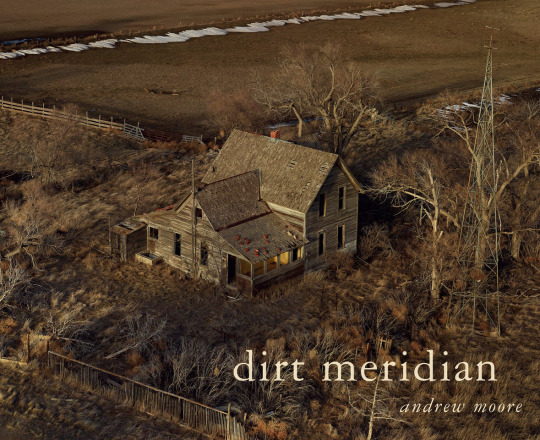
When “Dirt Meridian” arrived, I opened it and couldn’t put it down, studying every image. And, as I always do with a new book of photographs, I left it out, opened, on a counter I pass daily, so that I could look at it again and again and imprint the images in my memory.
This is not the kind of photography I endeavor to create in the controlled environment of a studio (or a pool, my particular kind of studio). Moore’s work is done outdoors, in this case in the vast, almost empty space of the great plains of middle America. What he shows us are sand hills and sky and weather and cattle. And the Badlands and old abandoned barns and buffalo and meadows and creeks, windmills and wildlife. He also shows the determined struggle of the human spirit against the toughest elements, and the effect of those on deserted homesteads.

America, its 100th meridian.
Moore’s epic visions of the vast treeless space in the 100th meridian, cutting through North and South Dakota, Nebraska, Kansas, Oklahoma, and Texas, are all about space -- empty sprawling and seemingly infinite space. The images are intoxicating, filled with magnificent beauty in the loneliness that is the trackless expanse of seemingly endless land. From his Acknowledgement: “…the land’s beauty lies in its vast and sublime emptiness."
I wrote to Moore and learned, happily, that his NYC studio/office is located only a few blocks from mine. So, I invited him for lunch and an in-person review of his magnificent photographs.
Working on this book project, he spent weeks at a time on many trips from the East, met many individuals and recorded their stories, histories, lives. Each photograph is accompanied by text containing fascinating information which provides a rich understanding of the work.
Moore made many of the photographs from a Cessna 180 single-engine plane flown by Doug Dean. They attached his medium format digital camera to one of the plane’s wing struts, using a screen and remote control from the passenger seat.
They flew low, yielding a unique perspective. This technique is one important reason why the images look so different from photographs of this area I’ve seen before. He spoke of the emptiness as a spiritual reservoir, a spiritual landscape. He wrote in the Acknowledgements, “the intimate seemed conjoined to the infinite."
During the project he moved from north to south, contrasting open spaces with cluttered, claustrophobic interiors, rich with poor, immigrants and native born, industrial scenes with mythic landscapes, all of which he explained was a metaphor for the sense of possibility, of hope that tomorrow will be a better day.
In the book his pilot wrote, “I hope you take pause, if only for a moment, to consider the story of this land, where second chances are few, and how the decisions we make today will impact the generations to follow."
Moore allowed me to choose images I personally wished to use for this review.

Storm Blow. ©Andrew Moore
From the book: “Sheridan County, Nebraska. These dry, fallow lands and terraces lie to the southeast of Clinton. The wind coming out of the north was blowing at over 70 mph. When choosing the angle approach to a subject, Doug Dean piloted us, if possible, into a headwind, since that slowed the plane down and allowed a bit more time for picture making. On this day we had little choice but to let a powerful tailwind take us on a Nantucket sleigh ride if we wanted to catch this billowing cloud of white dirt."

Pronghorn Antelope. ©Andrew Moore
From the book: “A herd of the wild antelope, which in wintertime can number into the hundreds, roams the high plains that stretch toward the Big Horn Mountains in the background. Early pioneer cattlemen noticed that the native grass animals roaming this area tasted particularly good, and to this day Niobrara County grass has become famous among livestock buyers for the finish it gives cattle.”

Riding Fence. ©Andrew Moore
From the book: “Sheridan County, Nebraska, 2013. Heidi and Brock Terrell and their son Royal (led by their red heeler) ride fence along their land in Sheridan County. They not only raise both cattle and sheep but they also farm soybeans and sugar beets. Heidi is a sixth generation descendant of Jules Sandoz, among the earliest homesteaders in the area. Better known as ‘Old Jules,’ legendary for his cussedness and his justly famous tenacity, he was immortalized in the biography of the same name written in 1935 by daughter Mari Sandoz.”

First Light. ©Andrew Moore
From the book: "Cherry County, Nebraska, 2013. Cattle and heron share a drink at the tank in the residual morning fog. Much of the success of cattle ranching in the Sandhills is due to the shallow reach down to the Ogallala Aquifer. In some places it's only six feet to water, so one can easily and cheaply put down a windmill in order to water livestock anywhere in the vastness of this terrain. (There are many sub-irrigated meadows that provide hay at the driest times.) The hilly landscape provides the herd with protection from the wind and snow. However, the quality of the grass is not as good as on hard soil land, so it can still take 20 to 30 acres to support just one cow/calf pair."

Round Up Number 2. ©Andrew Moore
From the book: “McKenzie County, North Dakota, 2005. Branding day at the Hepper Ranch outside the town of Keene. In the shadows of the Blue Buttes, amidst lush May grass, family, friends, and neighbors (and several dogs) help round up this herd of 300 cow/calf pairs. The large crew included five heelers, six sets of floppers, branders, vaccinators, and iron tenders. The older more experienced cowboys do the actual branding while the younger folks who wrestle the calves are known as floppers.”
In the book’s introduction, Kent Haruf wrote, “These are wonderful photographs, clear, and evocative, unsentimental, they seem to understand the sacredness of the country. They suggest its holiness."
Howard Schatz, November, 2018.
254 notes
·
View notes
Text
COOPER HEWITT AND CUBE ANNOUNCE PROJECTS FOR THE 2019 DESIGN TRIENNIAL
“NATURE—COOPER HEWITT DESIGN TRIENNIAL” WILL EXPLORE DESIGN’S ABILITY TO ADDRESS CRITICAL ISSUES SURROUNDING NATURE, CLIMATE AND THE ENVIRONMENT
Designers are striving to transform people’s relationship with the natural world. “Nature—Cooper Hewitt Design Triennial,” co-organized by Cooper Hewitt, Smithsonian Design Museum and Cube design museum in Kerkrade, Netherlands, will feature over 60 projects to demonstrate how designers are collaborating with scientists, engineers, environmentalists, academics and other stakeholders to find inventive and promising solutions to the environmental and social challenges confronting humanity today. On view May 10–Jan. 20, 2020, the Design Triennial will be presented at both Cooper Hewitt and Cube, allowing audiences in both the U.S. and Europe to experience the works simultaneously.
“With 2018 the Earth’s fourth-warmest year on record and global carbon emissions at an all-time high, the crisis of human-caused climate change has never been more dire,” said Caroline Baumann, director of Cooper Hewitt. “Solutions will not emerge without radical new thinking and alliances. ‘Nature’ brings together some of the most creative and intelligent designers whose works address our complex relationship to nature and its precious resources and advocate for greater empathy for our planet.”
“Co-operation is crucial in addressing the human-inflicted situation in which nature currently finds itself,” said Hans Gubbels, director of Cube. “The projects in ‘Nature,’ which we have brought together with Cooper Hewitt over the past three years, show great inventiveness. This carries the promise that we can bring human behavior back in line with nature again. Co-operation between design, science and technology thus can turn the tide for our planet.”
The exhibition is organized into seven sections, which describe designers’ strategies in working with nature: Understand, Simulate, Salvage, Facilitate, Augment, Remediate and Nurture.
Understand focuses on how designers mediate scientific knowledge to enhance humanity’s understanding of nature. Highlights include:
Curiosity Cloud by Austrian design duo Mischer’Traxler, which celebrates biodiversity while inviting meditation on nature’s fragility. The installation is composed of glass bulbs, each containing a handmade insect species that is native to New York. When visitors walk through the installation, the insects flutter.
National Design Award-winner Stamen Design’s Metagenomic Data Visualization, a software that accelerates the pace of scientific discoveries by generating user-friendly genome summaries from data gathered from any given microbial sample. The tool is currently used by scientists at the Banfield Lab at University of California, Berkeley.
Simulate offers advances in scientific understanding and technology that enable designers to simulate nature. Highlights include:
Designer Alexandra Daisy Ginsberg and olfactory artist Sissel Tolaas’ smell series Resurrecting the Sublime, which recreates the aromas of extinct flowers through DNA drawn from specimens preserved at the Harvard University Herbaria.
Dresses from the Biomimicry and Quantum Vibration collections designed by threeASFOUR (Gabriel Asfour, Angela Donhauser, Adi Gil) and Travis Fitch that exemplify how 3-D printing allows designers to mimic complex organic structures.
Salvage explores how humanity’s impact on the planet is galvanizing designers to reclaim and repurpose raw materials. Highlights include:
Shahar Livne’s Metamorphism vessel series, which envisions a future in which craftspeople will harvest the petroleum-based plastics that pollute the oceans and kill sea life as a new, abundant natural resource. To create the series, Livne mined discarded plastics and other materials to create a new material named Lithoplast.
AIR-INK—a project spearheaded by Anirudh Sharma, co-founder of Graviky Labs—collects CO2 emissions from fossil-fuel powered cars and diesel engines and purifies the emissions into a carbon pigment. The pigment is manufactured into an ink, with one bottle equaling 45 minutes of air pollution caused by a car.
In Facilitate, designers embrace nature’s dynamic forces to promote biological growth in architecture and products. Highlights include:
Eco-Engineered Hexagonal Seawall Tiles designed by Reef Design Labs, which are made from marine concrete formed with grooves, textures and ridges that foster marine life. Once installed on existing sea walls, which are too smooth to be habitable to most organisms, the tiles promote biodiversity in the natural ecosystem.
Bamboo Theater by Xu Tiantian, founder of the Beijing-based firm DnA_Design and Architecture, is a living structure located in a rural village in China that treats nature like a partner rather than a resource. The open-air theater has walls of living bamboo that villagers bend and weave inward to form a vaulted space.
Augment features projects that harness nature’s capabilities to enhance objects, buildings and the human body. Highlights include:
Tranceflora, a series of garments by Sputniko! and Masaya Kushino that probes the intersection of fashion and biotechnology. In collaboration with Japanese scientists and weavers from the 300-year-old Hosoo textile manufactory, the duo creates garments from transgenic glowing silk, made by injecting silkworm eggs with jellyfish or coral DNA.
Neri Oxman’s Aguahoja, which exemplifies the National Design Award winner’s advancement of material ecology, a design approach that seeks to unify nature’s material intelligence with engineering, computation and digital fabrication. The project culminates in a pavilion made from 3-D printed panels of plant cellulose and chitosan, a material made from the chitin present in invertebrate shells.
In Remediate, designers present works that attempt to slow, stop and reverse the negative impacts of humanity’s footprint on the planet. Highlights include:
Terreform ONE’s Monarch Sanctuary, which will transform Cooper Hewitt’s conservatory into a haven for monarch butterflies. These insects, whose wild populations are being decimated by climate change, will be released periodically during the exhibition.
Designer Jae Rhim Lee’s Infinity Burial Suit, which offers a sustainable alternative to burials. The organic cotton suit contains natural, biodegradable materials that assist in breaking down toxins present in the human body.
Projects in Nurture seek a broader realignment with the planet and challenge us to respect nature rather than dismiss it. Highlights include:
Nanobionic Plant Project: Ambient Illumination developed by chemical engineer Michael Strano and architect Sheila Kennedy, who seek to illuminate the world with plants. Through a combination of nanotechnology, plant biology and gardening, these bioluminescent plants may one day provide lighting for homes.
The Substitute, an installation by Alexandra Daisy Ginsberg that digitally resurrects the extinct male Northern white rhino using artificial intelligence and state-of-the-art visual effects. Scientists are seeking to resurrect the species from the brink of extinction using genetic engineering and surrogate gestation. But as Ginsberg points out, the survival of the species will depend on social, not genetic, engineering. The project is a commentary on the human preoccupation with creating new life forms while neglecting existing ones.
SPECIAL INSTALLATIONS
Cooper Hewitt’s Arthur Ross Terrace and Garden will feature two large-scale, site-specific installations unique to the U.S. presentation of the Design Triennial. The Tree of 40 Fruit by artist Sam Van Aken will blossom with apples, pears, plums, peaches, cherries and apricots. The tree is like a beautiful bouquet, created using centuries-old grafting techniques to preserve dozens of heirloom and rare fruit varieties threatened by industrial fruit production. Petrified River by the architects of Ensamble Studio is a 40-foot-long concrete “river” bookended by a “lake” and “mountain” that represent the transformation process of Manhattan from wild nature to an urbanized flattened landscape. It is a petrified metaphor for the rich landscape that was once Mannahatta or “island of many hills.”
Complementing the Design Triennial, Cooper Hewitt’s second-floor galleries will be devoted to a rotating presentation of objects from the museum’s expansive holdings of over 210,000 objects. “Nature by Design: Selections from the Permanent Collection” opens this spring and celebrates nature as perhaps the longest-continuing and most global sources of design inspiration. Spanning from the 16th century to the present, “Nature by Design” features extraordinary textiles, furniture, pattern books, jewelry and more to show how designers have interpreted nature’s rich beauty and complex science.
PUBLICATION
A 240-page book, Nature: Collaborations in Design, will be published by Cooper Hewitt and Cube, and distributed in the U.S. by Artbook | D.A.P. and worldwide by Thames & Hudson UK. Designed by Neil Donnelly, more than 300 photographs, illustrations and content from data visualizations will illustrate seven essays, which explain and explore designers’ strategies around understanding, simulating, salvaging, facilitating, augmenting, remediating and nurturing nature. Four conversations between scientists and designers—including George Church with Alexandra Daisy Ginsberg, and Michael John Gorman with Koert van Mensvoort—delve into topics related to synthetic biology, scientific versus design lexicon and recent shifts in the meaning of nature. Retail: $35. Available from SHOP Cooper Hewitt.
PUBLIC PROGRAMS AND SPECIAL EVENTS
Cooper Hewitt’s educational programs will engage audiences of all ages in conversations and workshops that amplify the themes of the Design Triennial. Programs include curator-led tours, an intergenerational Morning at the Museum, evening panel discussions and the 2019 High School Design Competition with Target, which challenges students around the country to design (or redesign) a nature-based solution to a global program. Cooper Hewitt’s friends and supporters will gather June 6 for a Garden Party in honor of “Nature,” and the popular outdoor summer concert series Cocktails at Cooper Hewitt will activate the Arthur Ross Terrace and Garden with music and performance inspired by the Design Triennial.
ABOUT THE DESIGN TRIENNIAL
“Nature—Cooper Hewitt Design Triennial” is the sixth installment of the series inaugurated in 2000 that looks at new developments in design as they surface in studios, fairs, shops, galleries and media around the world. “Nature” was developed by a cross-institutional curatorial team that includes Cooper Hewitt’s Caitlin Condell, associate curator and head of Drawings, Prints & Graphic Design; Andrea Lipps, assistant curator of contemporary design; Matilda McQuaid, deputy director of curatorial and head of Textiles; and Cube’s Gene Bertrand, program and development director, and Hans Gubbels, director of Cube. In organizing “Nature,” the curators engaged a panel of international advisors: Aric Chen, Professor, College of Design & Innovation, Tongji University, and Curator-at-Large, M+ (Hong Kong); Michael John Gorman, founder, BIOTOPIA Museum (Munich); Suzanne Lee, chief creative officer, Modern Meadow (New York); Ravi Naidoo, founder, Interactive Africa (Cape Town); Simone Rothman, founder and CEO, FutureAir (New York); and Barbara Stauffer, chief of community programs, National Museum of Natural History (Washington, D.C.).
“Nature—Cooper Hewitt Design Triennial” is made possible in part by support from the August Heckscher Exhibition Fund, Esme Usdan Exhibition Endowment Fund and the New York State Council on the Arts with the support of Governor Andrew M. Cuomo and the New York State Legislature.
ABOUT COOPER HEWITT, SMITHSONIAN DESIGN MUSEUM
Cooper Hewitt is America’s design museum. Inclusive, innovative and experimental, the museum’s dynamic exhibitions, education programs, master’s program, publications and online resources inspire, educate and empower people through design. An integral part of the Smithsonian Institution—the world’s largest museum and research complex—Cooper Hewitt is located on New York City’s Museum Mile in the historic, landmark Carnegie Mansion. Steward of one of the world’s most diverse and comprehensive design collections—over 210,000 objects that range from an ancient Egyptian faience cup dating to about 1100 BCE to contemporary 3D-printed objects and digital code—Cooper Hewitt welcomes everyone to discover the importance of design and its power to change the world. Cooper Hewitt knits digital into experiences to enhance ideas, extend reach beyond museum walls, and enable greater access, personalization, experimentation and connection.
Cooper Hewitt is located at 2 East 91st Street at Fifth Avenue in New York City. Hours are Sunday through Friday, 10 a.m. to 6 p.m., and Saturday, 10 a.m. to 9 p.m. The Arthur Ross Terrace and Garden, accessible without an admissions ticket, opens at 8 a.m., Monday through Friday. The Tarallucci e Vino café is open Monday through Friday, 8 a.m. to 5 p.m., Saturday, 10 a.m. to 7 p.m., and Sunday, 10 a.m. to 6 p.m. The museum is closed on Thanksgiving Day and Christmas Day. Public transit routes include the Lexington Avenue 4, 5 and 6 subways (86th or 96th Street stations), the Second Avenue Q subway (96th Street station), and the Fifth and Madison Avenue buses. Adult admission, $16 in advance via tickets.cooperhewitt.org, $18 at door; seniors, $10 in advance via tickets.cooperhewitt.org, $12 at door; students, $7 in advance via tickets.cooperhewitt.org, $9 at door. Cooper Hewitt members and children younger than age 18 are admitted free. Pay What You Wish every Saturday, 6 to 9 p.m. The museum is fully accessible.
For further information, call (212) 849-8400, visit Cooper Hewitt’s website at www.cooperhewitt.org and follow the museum on www.twitter.com/cooperhewitt, www.facebook.com/cooperhewitt and www.instagram.com/cooperhewitt.
ABOUT CUBE DESIGN MUSEUM
Cube is Holland’s first museum entirely dedicated to design. Cube displays meaningful design that has an impact on the world. A visit to Cube will provide an insight into the design process and it will inspire visitors to take an active part in thinking about shaping the world. Cube does not only stage exhibitions of trend-setting international and European design, it also functions as a multidisciplinary laboratory where visitors can join students and designers working on innovative product design. For further information, visit Cube’s website at http://bit.ly/2Uqt84a.
#
FACT SHEET PROJECTS FEATURED IN “NATURE—COOPER HEWITT DESIGN TRIENNIAL” CO-ORGANIZED WITH CUBE DESIGN MUSEUM
UNDERSTAND
Kim Albrecht and Barabási Lab, Northeastern University (Germany and United States) | VISUALIZING THE COSMIC WEB, 2016
Stella Mutegi and Kabage Karanja, Cave (Kenya) | ANTHROPOCENE MUSEUM, 2017–19
Antón García-Abril and Débora Mesa, Ensamble Studio (Spain and United States) | PETRIFIED RIVER, 2019
Tracy Fullerton, Game Innovation Lab, University of Southern California (United States) | WALDEN, A GAME, 2017
Aliki van der Kruijs (The Netherlands) | MADE BY RAIN, 2012–ONGOING
Giorgia Lupi, Accurat and Kaki King (Italy and United States) | BRUISES: THE DATA WE DON’T SEE, 2018
Katharina Mischer and Thomas Traxler, Mischer’Traxler Studio (Austria) | CURIOSITY CLOUD, 2015–19
Eric Rodenbeck, Stamen Design for Banfield Laboratory, University of California, Berkeley (United States) | METAGENOMIC DATA VISUALIZATION, 2016
Thomas Thwaites (United Kingdom) | GOATMAN, 2014–16
Charles Reilly, Wyss Institute for Biologically Inspired Engineering, Harvard University (United States) | CHOREOGRAPHY OF LIFE, 2018
James C. Weaver, Wyss Institute for Biologically Inspired Engineering, Harvard University (United States) | ELECTRON MICROGRAPHS, 2019
SIMULATE
Bastian Schafer, Airbus, David Benjamin, The Living, Autodesk and AP Works (The Netherlands, United States, and Germany) | BIONIC PARTITION, 2016–ONGOING
Adam E. Jakus and Ramille Shah, Dimension Inx LLC and Adam Jakus Technology as Art (United States) | 3D-PAINTED HYPERELASTIC BONE, 2015–ONGOING
Festo AG & Co. KG (Germany) | BIONICANT, 2018
Alexandra Daisy Ginsberg, Sissel Tolaas, and Christina Agapakis, Ginkgo Bioworks (United Kingdom, Norway, and United States) | RESURRECTING THE SUBLIME, 2018–19
Alexandra Kehayoglou (Argentina) | SANTA CRUZ RIVER, 2017
Mathieu Lehanneur (France) | CIRCULAR LOW TABLE XXL, OCEAN MEMORIES, 2017
Jifei Ou and Hiroshi Ishii, Tangible Media Group, MIT Media Lab, Massachusetts Institute of Technology (United States) | CILLLIA, 2017–19
Mostapha El Oulhani, Michelin (France) | VISIONARY CONCEPT TIRE, 2016–19
Modern Meadow (United States) | ZOA BIOFABRICATED WALL PANELS, 2019
Gabriel Asfour, Angela Donhauser, and Adi Gil, threeASFOUR and Travis Fitch (United States) | OSCILLATION DRESS, QUANTUM VIBRATION COLLECTION, 2017 and VORONOI DRESS, BIOMIMICRY COLLECTION, 2016
David Mooney, Ben Freedman, and Jianyu Li, Mooney Lab for Cell and Tissue Engineering, John A. Paulson School of Engineering and Applied Sciences and Wyss Institute for Biologically Inspired Engineering, Harvard University (United States) | SEA SLUG BANDAGES, 2017–ONGOING
SALVAGE
Adidas and Parley (Germany and United States) | ULTRABOOST SHOE, 2016–ONGOING
Studio Klarenbeek & Dros with Atelier Luma (The Netherlands and France) | ALGAE LAB, 2018
Nadine Sterk and Lonny van Ryswyck, Atelier NL (The Netherlands) | A WORLD OF SAND, 2010–ONGOING
Anirudh Sharma, Graviky Labs (India) | AIR-INK, 2013–ONGOING
Shahar Livne (The Netherlands) | METAMORPHISM, 2017–ONGOING
Julia Lohmann, Violaine Buet, and Jon Lister (Finland, France, and New Zealand) | DEPARTMENT OF SEAWEED: LIVING ARCHIVE, 2018–ONGOING
Kirstie Van Noort (The Netherlands) | LATITUDE FOR UNIQUENESS SERIES, 2014–ONGOING
Nienke Hoogvliet, Studio Nienke Hoogvliet (The Netherlands) | SEA ME, 2017–ONGOING
FACILITATE
Ginger Krieg Dosier, bioMASON (United States) | BIOCEMENT BRICKS, 2017–ONGOING
Amy Congdon (United States) | TISSUE ENGINEERED TEXTILES, 2015–ONGOING
Natsai Audrey Chieza, Faber Futures (United Kingdom) | PROJECT COELICOLOR: TERROIR 001 and ASSEMBLAGE 002, 2019
Alex Goad, Reef Design Lab (Australia) | ECO-ENGINEERED HEXAGONAL SEAWALL TILES, 2017–ONGOING
Caleb Harper and Hildreth England, Open Agriculture Initiative (OpenAg), MIT Media Lab, Massachusetts Institute of Technology (United States) | PERSONAL FOOD COMPUTER, 2018–ONGOING
Erez Nevi Pana (Austria) | BLEACHED (II), 2018
Arturo Vittori, Architecture and Vision and Warka Water Inc. (Italy and United States) | WARKA WATER TOWER, 2013–ONGOING
Xu Tiantian, DnA_Design and Architecture (China) | BAMBOO THEATRE, 2015–ONGOING
AUGMENT
Sam Van Aken (United States) | TREE OF 40 FRUIT, 2008–ONGOING
Sputniko! (Hiromi Ozaki) and Masaya Kushino, Another Farm (Japan) | TRANCEFLORA, 2015–19
Guillermo Parada, Tamara Pérez, Sebastián Rozas and Victor Imperiale, gt2P (great things to People) (Chile) | REMOLTEN N°1: REVOLUTION SERIES, 2017 and WALL-MOUNTED LIGHTS FROM THE SERIES LESS CPP N°2: WALL MURAL 15C, 2018
Josiah Zayner, The Open Dictionary Institute (The ODIN) (United States) | DIY BACTERIAL GENE ENGINEERING CRISPR KIT, 2015–ONGOING
Neri Oxman and The Mediated Matter Group, MIT Media Lab, Massachusetts Institute of Technology (United States) | AGUAHOJA, 2017–19
Living Materials Silklab, Tufts University Biomedical Engineering (United States) | CATALOGUE OF 10 SILK-PROTEIN DERIVED DEVICES AT THE INTERFACE BETWEEN TECHNOLOGY AND LIFE SCIENCES, 2019
Oron Catts and Ionat Zurr, The Tissue Culture and Art Project (Australia) | BIOMESS, 2019
Chuck Hoberman, Richard Novak, Elizabeth Calamari, Sauveur Jeanty, and Donald Ingber, Wyss Institute for Biologically Inspired Engineering, Harvard University (United States) | ORIGAMI MEMBRANE FOR 3D ORGAN ENGINEERING, 2018–ONGOING
REMEDIATE
Jae Rhim Lee, Coeio (United States) | INFINITY BURIAL SUIT, 2016–ONGOING
Ulrika K. Stigsdotter, University of Copenhagen (Denmark) | NACADIA THERAPY FOREST GARDEN, 2011–ONGOING
Harvard Biodesign Lab (United States) | SOFT ROBOTIC GRIP GLOVE, 2015–ONGOING
Nienke Hoogvliet, Studio Nienke Hoogvliet (The Netherlands) | MOURN, 2017–ONGOING
Fernando Laposse (Mexico and United Kingdom) | TOTOMOXLE, 2017–ONGOING
Sheng-Hung Lee (Taiwan) | TETRAPOT 2.0 – THE EVOLUTION OF GREENER SEA DEFENSE, 2015–18
Max Liboiron, CLEAR (Civic Laboratory for Environmental Action Research) (Canada) | BABYLEGS, 2017–19
Charlotte McCurdy (United States) | AFTER ANCIENT SUNLIGHT, 2018
Mitchell Joachim and Vivian Kuan, Terreform ONE (United States) | MONARCH SANCTUARY, 2018–ONGOING
NURTURE
Marcos, Cruz, Richard Beckett and Javier Ruiz (United Kingdom) | BIORECEPTIVE CONCRETE PANELS, LONDON, UK, 2017–19
Teresa Van Dongen (The Netherlands) | ELECTRIC LIFE, 2018
Alexandra Daisy Ginsberg (United Kingdom) | THE SUBSTITUTE, 2019
Jorge Gamboa (Mexico) | PLASTICEBERG, 2018
MASS Design Group (United States) | RWANDA INSTITUTE FOR CONSERVATION AGRICULTURE, 2018–ONGOING
Michael Strano, MIT Chemical Engineering and Sheila Kennedy, MIT Architecture, Massachusetts Institute of Technology and KVA Studio (United States) | NANOBIONIC PLANT PROJECT: AMBIENT ILLUMINATION, 2016–ONGOING
Hiroshi Sambuichi (Japan) | THE WATER AT CISTERNERNE OF FREDERIKSBERG, 2017
VTN (Vo Trong Nghia) Architects (Vietnam) | FPT UNIVERSITY HO CHI MINH CITY, 2016–ONGOING
*LOCATIONS IN PARENTHESES INDICATE WHERE DESIGNER/FIRM IS ACTIVE
#
from Cooper Hewitt, Smithsonian Design Museum http://bit.ly/2DLn9RQ via IFTTT
2 notes
·
View notes
Text
Independent Study Finds Businesses Using Chronosphere's Cloud Native Observability Platform Gain $7.9 Million in Business Value
Independent Study Finds Businesses Using Chronosphere’s Cloud Native Observability Platform Gain $7.9 Million in Business Value
Total Economic Impact (TEI) studies reveal significant cost savings, dramatically reduced downtime and greater engineering productivity – resulting in a 165% return on investment. New York, December 12, 2022 /PRNewswire/ — Chronosphere, the only cloud-native observability platform that manages massive data growth and complexity for engineers, today announced a Total Economic Impact™ (TEI) Study,…

View On WordPress
0 notes
Text
Cloud Engineering for FinTech Companies
Let your FinTech company reach the sky with our cloud engineering services!
FinTech is one of the most innovative and fastest growing sectors in the world. The reason behind its success is that it has managed to become more than just a business; it has become a way of life for people.
Being one of the best digital transformation companies, we realise that the main goal of FinTech companies is to connect their goals with consumer preferences. In other words, they want to make digital processes better so that people may personalise them.
The reason why cloud engineering has become so popular is because it allows users to have access to information from anywhere at any time without having to go through any hassle.
Read Also: Why is Cloud Engineering Necessary for Fintech?
According to The New York Times, Capital One, Morgan Stanley, and Wells Fargo are all making the switch to cloud-based services. Moreover, to develop Goldman Sachs' Financial Cloud for Data, NASDAQ and Amazon Web Services are also working together.
Smaller financial institutions are prepared to follow in the footsteps of these financial industry titans, according to EidosMedia.
The banking and finance sectors are being transformed by cloud technology, which is enabling more adaptable and agile business structures to meet expanding demands.
The financial and banking industries have transformed into significantly adaptable and versatile company models that are focused on their progress, thanks to cloud technology.
FinTech is using cloud technology in a variety of ways to speed up the innovation process in the financial industry. Economic advantages include:
Data management opportunities,
Lower operating expenses,
Automated analytical systems,
Client service,
Contingency planning,
Scalability, and
General increases in corporate efficiency serve as manifestations of this.
A Real-life Scenario:
There's a strong possibility the services a financial institute used today were integrated and operated on the cloud if they made a purchase or transferred funds through one bank to the other.
This is mostly due to the fact that business is continuously active and monetary operations must occur in real-time, both of which necessitate a modern infrastructure to manage heavy traffic levels and be accessible at all times.
Several FinTech companies used the cloud to complete their digital transition. But not every cloud strategy is the same, particularly when it comes to certain financial applications. The majority, if not all, of FinTech will eventually shift into a cloud-native environment as the demand for highly scalable financial apps grows over time.
Why Choose Cloud Engineering?

FinTech has changed the way we invest and transfer money.
According to research cited by McKinsey in a report on the key technologies shaping the future of FinTech, the top 500 global corporations will generate over $1 trillion in revenue from cloud computing by 2030.
FinTech organisations have been working tirelessly to make sure their customers have access to new and innovative products and services that are easy to use, reliable, and secure.
However, this has not always been easy because they may be dealing with sensitive customer data, which is why they need a robust cloud infrastructure to ensure high levels of security.
Utilising cloud computing in your financial organisation enables you to develop as a whole and adjust in accordance with your objectives and requirements. There is no time commitment, and it is a one-time expenditure. You will need more personnel or a larger office when your company grows, but you won't need to spend money on new infrastructure to run your company on a daily basis
According to Research and Markets, the global cloud computing industry will grow at a 16.3% CAGR to $947.3 billion by 2026.
Cloud computing services have been essential in assisting the global FinTech Revolution. Investors' confidence in the financial sector has indeed been restored, thanks to its importance in the industry of information technology with consideration to security vulnerabilities. And right now, your business may take advantage of cloud services to aid in the FinTech Revolution.
Read Also: What is the Role of Cloud Engineering in Digital Transformation?
Let's look at some innovative technologies that already influence how clients and financial institutions communicate.
AUTONOMOUS SERVICES
The financial industry's capabilities can be accelerated and improved, thanks to rentable processing capacity.
The financial industry is a complex network of players, where data needs to be handled in an efficient and secure manner. The creation of automated and intelligent solutions like artificial intelligence (AI), machine learning (ML), and data analysis is actively employed for fraud prevention and detection, handling banking products and services, and credit monitoring.
Cloud computing currently allows for the efficient and effective management of these procedures. Massive computer capacity is necessitated by these solutions, which makes renting processing power a viable option for businesses looking to accelerate their operations.
MORE AGILITY
When it comes to FinTech and banking, you might think that agility is a no-brainer. These organisations are constantly looking for ways to stay ahead of the curve, so why wouldn't they invest in a platform that would allow them to do just that?
The answer lies in the fact that agility is not just about staying on top of industry trends. It's also about being able to respond quickly and effectively when those trends change or even disappear altogether.
If an organisation has invested heavily in an outdated system, they may be forced to adapt slower than their competitors, which could have serious consequences for their bottom line.
By investing in cloud computing solutions, FinTech entities can ensure that they are always prepared for innovation while keeping costs low and resources focused on their core business needs.
24x7 CUSTOMER SERVICE
When you're a FinTech company, your customers expect nothing less than the best. That's why it's so important to provide them with 24x7 customer service—and that's exactly what cloud computing services from major industry players can offer.
Considering our experience as the best digital transformation solutions provider, we can confirm that cloud computing firms offer superior support for their premium partners and ensure that all your clients get the best possible experience.
The technical assistance that these firms offer is also of the highest calibre, which makes it much easier to troubleshoot and resolve any kind of issue. This means that you're free to focus on providing excellent customer service—your end of the production line—instead of having to worry about maintaining a reliable system yourself.
CORPORATE EFFECTIVENESS
The Economist Intelligence Unit and Temenos, a Swiss software company, conducted a survey of IT leaders in the banking industry to learn more about the driving force behind FinTech's cloud rise and gathered the following information.
Implementing cloud computing, according to 72% of respondents, will help them "meet their corporate aims."
The reliability of cloud computing for enterprises has already been mentioned. The businesses offering these services have sophisticated data storage systems and offer a significantly higher level of protection than other businesses.
The core competencies of cloud computing firms far outweigh those of a single small-to-mid sized organisation, and occasionally even a large one if the latter doesn't specialise in the technology sector. As a result, corporate efficiency generally improves as well.
In essence, this means that companies can focus on their core competencies instead of worrying about IT infrastructure or maintaining hardware. They also don't have to spend time or resources on backup procedures because it's all taken care of by the third-party provider. Moreover, there is no need for expensive upgrades because the services are always up to date with the latest innovations.
LOWER COSTS FOR ADMINISTRATION
Cloud computing offers significant cost savings in administration, as it reduces the need for onsite maintenance. This is because cloud computing uses less infrastructure than traditional, private servers. This means that there is less hardware to maintain, and less frequent software updates required.
Maintaining a current IT infrastructure is advised for performance and security reasons. The requirement to maintain technology is significantly diminished when less infrastructure is located inside of the premises allowing the customer to reduce their ongoing operating costs.
In fact, even McKinsey reports that cloud computing can “raise infrastructure cost efficiency by 29 percent; and reduce migrated applications’ downtime by ~57 percent, thus lowering costs associated with technical violations by 26 percent.”
ENHANCED SECURITY
The banking sector's biggest weakness has always been security. However, cloud computing has given the sector the adaptability to meet and even exceed the demands and rules of the market. Contrary to popular belief, businesses that use cloud services may have higher levels of security than other businesses.
As McKinsey puts it, "the cloud can improve platform integrity through automated and embedded security processes and controls. A cloud-based feature reduces technical risks through a consistent, cross-environmental technology stack."
Financial institutions may rest easy knowing that their infrastructure is constructed with enterprise-quality hardware, ensuring that data is backed up on several servers that can be accessed from various locations. The Cloud also provides a higher level of flexibility and scalability than traditional systems. This means that you can easily add new features or functionality without having to modify your existing infrastructure or invest in new hardware.
Additionally, top-notch cloud service providers come with antivirus and malware defences already installed.
Read Also: Useful Cloud Security Tools for Your Business
CONCLUSION
In summation, FinTech businesses can greatly profit from cloud computing. It is evident that many operations may simply be shipped overseas, freeing up company time and financial resources to focus on service improvement and expansion.
According to McKinsey, artificial intelligence (AI) has the potential to bring up to $1 trillion in value to the global banking sector each year.
Renting cloud services vs. purchasing genuine hardware to analyse all your data results in significant efficiency and cost differences. As a result, companies that use cloud technology in their operations enjoy heightened security, dependability, portability, and efficiency, as well as connection to much larger infrastructure and a wide range of other alternatives.
Read Also: How to Grow Your Business to the Next Level with Cloud Solutions?
Take your business to the next level by contacting TransformHub, the top digital transformation company.
0 notes
Text
In this blog post, we will explore five ways in which cloud computing simplifies business operations while prioritizing the critical aspect of cloud computing security, with a focus on the innovative solutions offered by Evolve Cloud Labs.
#trusted cloud native services company in USA#cloud native data engineering in New York#cloud native data engineering in USA#cloud migration#cloud native services company#cloud native app development
0 notes
Text
What's New In Flutter 2.2 Announced At Google I/O 2021?
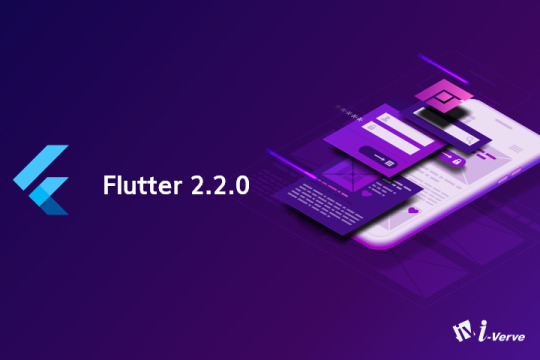
Flutter is an open source toolkit for building beautiful, natively compiled apps for any device from a single codebase.
Customers around the world are using Flutter to make beautiful apps of all sizes in record time, to meet users wherever they may be.
Introducing Flutter 2.2
Flutter 2.2 is so far the best version of Flutter, with updates that make it easier than ever for developers to monetize their apps through in-app purchases, payments and ads; to connect to cloud services and APIs that extend apps to support new capabilities; and with tooling and language features that allow developers to eliminate a whole class of errors, increase app performance and reduce package size.
The 2.2 release merges 2,456 PRs and closes 3,105 issues across the framework, engine, and plugins repositories.
With Flutter 2.2, enterprises, startups and entrepreneurs can build high-quality solutions that can reach their full potential with respect to their addressable market, allowing creative inspiration (rather than target platform) to be the only limiting factor. Hire Flutter developers from i-Verve Inc to build craft secure, cross-platform apps using a single codebase that runs smoothly on both iOS and Android platforms.
Analyst firm SlashData’s Mobile Developer Population Forecast 2021 shows that Flutter is now the most popular framework for cross-platform development, with 45% of the developers selecting it, representing 47% growth between Q1 2020 and Q1 2021. Google’s own data confirms this shift towards Flutter.
There are now over 200,000 apps in the Play Store alone built using Flutter.
Some of the most innovative Flutter apps are coming from names you might not have heard of, such as Wombo– the viral singing selfie app, Fastic– the intermittent fasting app, and Kite- a beautiful investment trading app.
Flutter is also used by large corporations including Tencent, whose WeChat messaging app is used by over 1.2 billion users; ByteDance, originators of TikTok, who have built 70 distinct apps using Flutter; and Capital One, BMW, eBay, Alibaba Group, Groupon, Square, Google and The New York Times.
Sound null safety is now the default for new projects. Null safety adds protection against null reference exceptions, giving developers the means to express non-nullable types in their code. And since Dart’s implementation is sound, the compiler can eliminate null checks at runtime, providing increased performance for your apps.
There are a lot of performance improvements in this release. For web apps, background caching using service workers has been offered. For Android apps, deferred components are supported. For iOS, Flutter has been working to eliminate or reduce first-run jank. Flutter has added a number of new features to the DevTools suite, as well as support for third-party tools extensions.
Flutter has been working on a few important areas of polish, such as improved accessibility for web targets.
Flutter continues to build trusted services that help developers responsibly monetize their apps. Flutter’s new ads SDK is updated in this release with null safety and support for adaptive banner formats. A new payment plugin is being introduced, built in partnership with the Google Pay team, that lets you take payment for physical goods on both iOS and Android. The in-app purchases plugin has been updated, along with a matching codelab.
More than a Google project
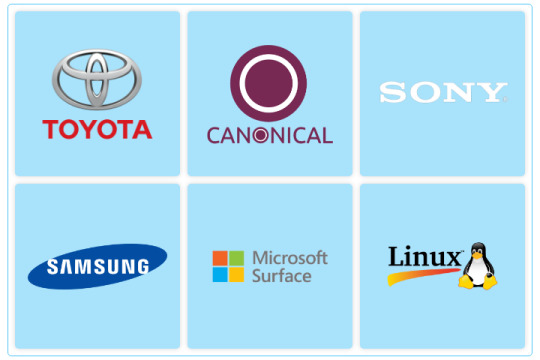
While Google continues to be the primary contributor to the Flutter project, there has been a broadening of Flutter to an ever growing number of platforms and operating systems.
Toyota is bringing Flutter to their next generation vehicle infotainment systems. In April, Canonical shipped their first release of Ubuntu with integrated support for Flutter, with Snap integration and support for Wayland.
Samsung is porting Flutter to Tizen, with an open source repository that others can also contribute to. Sony is leading the effort to deliver a solution for embedded Linux.
Designers benefit also from the open source nature of this project, with the announcement from Adobe of its updated XD to Flutter plugin. Adobe XD provides designers a great way to experiment and iterate. With enhanced Flutter support now, designers and developers can collaborate on the same assets, putting great ideas into production faster than ever.
Microsoft continues to collaborate with Flutter. Besides the work the Surface team has been doing to build foldable experiences with Flutter, work is being done on Flutter support for UWP apps built for Windows 10.
In addition to each new Flutter release, a release also includes a number of features which aren’t yet ready for production use but which Flutter wants you to be able to verify that they’re working the way you want them to. And finally, each new release comes with a set of associated tooling updates and updates from the larger Flutter community. There is too much going on with each new release of Flutter these days, so we’ll focus on the highlights.
1). Flutter 2.2 updates in stable
Flutter empowers you by removing traditional impediments to reaching your audience.
This release covers a wide range of improvements on top of Flutter 2, including updates across Android, iOS and web, new Material icons, updates to text handling, scrollbar behavior, and mouse cursor support for the TextSpan widget and new guidance on how to best support multiple kinds of platforms from a single source code base.
Dart 2.13: The improvements are made through a new release of Dart- Dart 2.13. Dart is a modern, client-optimized programming language and is the “secret sauce” that powers Flutter.
Dart 2.13 expands support for native interoperability, with support for arrays and packed structs in FFI. It also includes support for type aliases, which increase readability and provide a gentle pathway for certain refactoring scenarios. Flutter continues to add integrations for the broader ecosystem, with a Dart GitHub Action and a curated Docker Official Image that is optimized for cloud-based deployment of business logic.
Flutter web updates: Improvements have been made to both web renderers- HTML and CanvasKit. Semantic node position has been improved to close the gap between mobile and desktop web apps when using transforms. Flutter will continue to improve accessibility support. The latest version of Flutter DevTools now supports the layout explorer for your Flutter web apps.
iOS page transitions and incremental installs: Incremental iOS installs have been implemented during the development process. There is a 40% decrease in the amount of time to install an updated version of your iOS app, which decreases your turn-around time when testing app changes. Hire iOS App Developers who can help accelerate your business growth with custom app development services.
Use Flutter to build platform adaptive apps: Flutter has the support you need to not only target your app at multiple platforms but also intends to tailor your apps for screen size, input modes, and idioms of each of these platforms.
More Material icons: Flutter has landed 2 separate PRs adding new Material icons to Flutter.
Improved text handling: This gives your end users a more intuitive experience. Flutter continues to work to give you complete text editing actions. Flutter’s goal is that, by the time Flutter desktop gets to stable, your users won’t be able to tell the difference between editing text in their Flutter apps vs any other app on the host OS.
Automatic scrolling behavior: As a part of the continuing quest to make Flutter apps behave like the best apps on each platform, Flutter took another look at scrollbars in this release.
Mouse cursors over text spans: Things like this may seem small but they go a long way towards making a Flutter app feel just like a user expects it to feel.
2). Flutter 2.2 updates in preview
In addition to the new features available for production use, the Flutter 2.2 version comes with a number of features in preview. Users can give these features a try, and give feedback if they have any issues.
Preview: iOS shader compilation improvements: Until now, the only way to avoid jank on iOS was to simplify scenes and animations, which was not ideal. However, on the dev channel is a preview of the new support in Skia for shader warm-up for Metal. Through Skia, Flutter now compiles the bundled shaders before the first frame workload begins.
On both Android and iOS, this implementation has a few drawbacks. So Flutter continues to investigate approaches to eliminate shader compilation jank, and all jank in general, that do not rely on this implementation. Flutter is working with the Skia team to reduce the number of shaders it generates in response to Flutter’s requests, as well as investigating how much Flutter might be implemented with a small set of statically defined shaders bundled with the Flutter Engine.
You can follow this project in the Flutter repo at https://github.com/flutter/flutter/projects/188 to see the progress.
Android deferred components: For Android, this release uses Dart’s split AOT compilation feature to allow Flutter apps to download modules containing ahead-of-time compiled code and assets at runtime. Each of these installable splits is called a deferred component. By deferring the download of code and assets to only when needed, initial install size can be significantly reduced. Hire android app developers to build secure, feature-rich, high-performance, and robust android apps.
Flutter Windows UWP alpha: This update is for desktop lovers. Support for Windows UWP has moved to alpha in the dev channel (beyond the stable 2.2 version). UWP allows you to take your Flutter apps to devices where standard Windows apps don’t run, including Xbox.
ARM64 Linux host support from Sony: This PR enables you to build and run Flutter apps on ARM64 Linux machines.
It’s exciting to see the Flutter community bringing Flutter to places that the team at Google could never have imagined.
For more details read the blog continue - Google Announced Flutter 2.2 at Google I/O 2021, With New Features
#flutter#Flutter 2.2#flutter new fuatures#flutter app developers#flutter app development#flutter app
0 notes
Text
Automatic upgrades of Amazon RDS for MariaDB versions 10.0 and 10.1 to begin March 9, 2021
MariaDB Server is one of the world’s most popular open source relational databases. It is available in the standard repositories of all major Linux and Windows distributions. The MariaDB Foundation ensures a steady cadence of releases. On average, MariaDB Server has had one stable major release every year. The current supported versions are 10.2, 10.3, 10.4, 10.5. The development version is 10.6. Each stable version receives periodic bug and security fixes. The community end of life (EOL) policy is to support a major version for five years after its initial release. For EOL releases, MariaDB Foundation does not provide security updates. For the final release dates of all versions of MariaDB, see the MariaDB Server maintenance policy. Versions 10.0 and 10.1 will reach EOL on February 9, 2021. In this blog post, we will explain why you should upgrade to the latest version of MariaDB and how AWS will support you throughout this journey. Preparing to upgrade Amazon Relational Database Service (Amazon RDS) for MariaDB makes it easy to set up, operate, and scale MariaDB server deployments in the cloud. With Amazon RDS, you can deploy scalable MariaDB cloud databases in minutes with cost-efficient and resizable hardware capacity. Amazon RDS frees you up to focus on your application by managing time-consuming database administration tasks, including backups, software patching, monitoring, scaling, and replication. Amazon RDS relies on the MariaDB Foundation to fix critical security, availability, and data correctness issues in the database engine. After the community stops supporting a major version, it’s important to retire unsupported major versions in tandem with the community. We encourage you to upgrade to newer versions as soon as possible and validate your applications before automatic upgrades begin. To encourage the use of newer versions of MariaDB, Amazon RDS for MariaDB has stopped supporting the creation of MariaDB 10.0 and 10.1 instances in the console or AWS Command Line Interface (AWS CLI). After February 9, 2021, RDS will automatically upgrade MariaDB 10.0 and 10.1 instances to version 10.3 within the earliest scheduled maintenance window that follows. Any remaining MariaDB 10.0 and 10.1 instances will be automatically upgraded to MariaDB 10.3 after March 9, 2021. We strongly encourage you to upgrade any Amazon RDS for MariaDB 10.0 and 10.1 databases before March 9, 2021 so you have time to test your applications. To get a list of all valid upgrade targets, use the describe-db-engine-versions AWS CLI command. For example: export REGION=AWS-Region export ENDPOINT=https://rds.AWS-Region.amazonaws.com aws rds describe-db-engine-versions --engine mariadb --engine-version version-number --query "DBEngineVersions[*].ValidUpgradeTarget[*].{EngineVersion:EngineVersion}" --output text To identify valid upgrade targets for a MariaDB version 10.1.19 DB instance, run the following AWS CLI command: aws rds describe-db-engine-versions --engine mariadb --engine-version 10.1.19 --query "DBEngineVersions[*].ValidUpgradeTarget[*].{EngineVersion:EngineVersion}" --output text If you have any MariaDB 10.0 or 10.1 instances in your account, you can upgrade them before March 09, 2021. For instructions, see Upgrading the MariaDB Engine for Amazon RDS in the Amazon RDS User Guide. After March 09, 2021, RDS will automatically upgrade any MariaDB 10.0 and 10.1 instances to version 10.3, whether or not they are in a maintenance window. Major version upgrades for MariaDB Major version upgrades can contain database changes that are not backward-compatible with existing applications. As a result, Amazon RDS doesn’t apply major version upgrades automatically. You must manually modify your DB instance. We recommend that you thoroughly test any upgrade before you apply it to your production instances. Amazon RDS supports the following in-place upgrades for major versions of the MariaDB database engine: MariaDB 10.0 to MariaDB 10.1 MariaDB 10.1 to MariaDB 10.2 MariaDB 10.2 to MariaDB 10.3 MariaDB 10.3 to MariaDB 10.4 MariaDB 10.4 to MariaDB 10.5 To perform a major version upgrade for a MariaDB version 10.0 DB instance on Amazon RDS to MariaDB version 10.1 or later, first upgrade to each major version: 10.0 to 10.1, and then 10.1 to 10.2, and then 10.2 to 10.3, and then 10.3 to 10.4, and then 10.4 to 10.5. Features in new major versions Although Amazon RDS recommends that you upgrade all RDS for MariaDB 10.0 and 10.1 instances to MariaDB 10.3 or later, there might be business reasons that require you to upgrade to a different major version. For example, some applications are not yet certified on MariaDB 10.3 and must move to an earlier version. When you manually upgrade before the automatic upgrades that start on March 9, you can choose the version of MariaDB that best meets your needs. The following table summarizes the major features of current versions. For more information, see MariaDB on Amazon RDS in the Amazon RDS User Guide. Version Community EOL date Major features 10.3 May 25, 2023 Oracle compatibility: Sequence, PL/SQL More storage engines: InnoDB, MyRocks, SPIDER Temporal data processing (system versioned tables) Storage engine independent column compression Improved DDL operations 10.4 June 18, 2024 Multiple authentication plugins Optimizer trace Transparent Data Encryption (TDE) Key management and encryption plugin Audit plugin 10.5 June 24, 2025 ColumnStore storage engine Amazon S3 archival Granular permissions Query optimizer In addition to the new features available in each major version, Amazon RDS MariaDB continues to increase performance year over year, which provides a compelling reason to stay current with the latest versions. Newer MariaDB versions also give you access to newer instance types. However, because some queries or operations in your application might experience performance regressions, be sure to test for performance and compatibility with your application before you upgrade. Summary Here are critical dates for MariaDB 10.0 and 10.1: MariaDB 10.0 MariaDB 10.1 Retired by MariaDB community March 31, 2019 Retired by MariaDB community October 17, 2020 Amazon RDS for MariaDB EOL February 9, 2021 Amazon RDS for MariaDB EOL February 9, 2021 Amazon RDS for MariaDB 10.2 will reach end of life in early 2022. Now is the time for you to upgrade all your MariaDB 10.0 and 10.1 instances. You can initiate upgrades to MariaDB 10.3 or later at any time until March 9, 2021. After March 9, Amazon RDS for MariaDB will automatically upgrade any remaining MariaDB 10.0 and 10.1 instances to version 10.3, whether or not they are in a maintenance window. If you have questions or concerns, please share them in the comments. For more information about Amazon RDS, see the Amazon RDS Features, Resources, Pricing, and FAQ pages. About the Authors Nitin Aggarwal is a Senior Solutions Architect at AWS based in New York. He provides technical assistance and architectural guidance to customers. Before he joined AWS, Nitin worked for more than 16 years in software engineering and architecture roles for various large-scale enterprises. Gaurav Sharma is a Solutions Architect at AWS. He offers architectural guidance to digital native business customers. Vivek Kumar is a Solutions Architect at AWS. He offers architectural guidance to digital native business customers. Sai Kondapalli is a Database Specialist Solutions Architect at Amazon Web Services. https://aws.amazon.com/blogs/database/automatic-upgrades-of-amazon-rds-for-mariadb-versions-10-0-and-10-1-to-begin-march-9-2021/
0 notes
Text
Float.com: Senior Application Engineer

Headquarters: New York, NY URL: http://float.com
Description
Float is the world's leading resource scheduling app, helping more than 3,000 creative teams plan their time.
We're seeking a Senior Application Engineer who is excited by the prospect of working with a small, highly-skilled engineering team to scale a fast-growing SaaS product. The ideal candidate is a talented, reliable PHP-focused programmer who is also experienced and enthusiastic about node.js application development.
You will help us build great features, scale, and maintain our codebase while supporting a wide variety of technologies. You should be familiar with modern microservice development and its associated benefits (and challenges) in creating stable, performant, rapidly deployable services.
Here's an example of what that might look like:
Develop and test our next-generation applications
Architect and extend our microservice suite for enhanced scalability and performance
Optimize data structures, queries, and caching strategies
Add new features to meet the needs of our customers
Deliver performance enhancements
Reviewing the engineering team's technical proposals and code
Help our support team triage technical and application-related issues
Contribute to internal tools to help our engineers, sales and customer support teams work more efficiently
This is a 100% remote position. You’ll report directly to our CTO, who is based in New York.
Requirements
Expert proficiency with PHP in a production environment
Expert proficiency with relational and NoSQL databases (MySQL, MongoDB) and query languages)
Expertise with current PHP frameworks such as Yii 2, Laravel, CodeIgniter, Symfony, etc., in a production environment
Extensive experience with microservice-based architecture in production
Experience with software containerization (Docker, Kubernetes) and serverless computing
Experience developing REST APIs
Experience with cloud computing vendors: GCP (preferred), AWS, Azure.
Bonus points for:
Expertise with node.js (or other programming language) in a production environment
Experience with message-queueing software and/or pub/sub-applications
Developing integrations with third-party APIs
Experience with CircleCI, Jenkins and/or similar CI/CD applications
Experience with testing, monitoring, and other SRE methodologies
Experience with security compliance standards
About you
You are passionate about data and developing applications that communicate through elegantly designed, well-defined systems that meet specific business goals.
You're a great communicator, naturally curious and comfortable diving in and helping out without ego.
You'll have strong experience in a collaborative environment working with web applications, preferably B2B SaaS apps.
You should consider yourself an expert in:
PHP 7: native and MVC framework, e.g., Yii/Yii2 (5+ years)
Server-side JavaScript: Node.js application development
REST API management, tools and documentation
Relational and NoSql database development: MySql, MongoDB
Source control workflow: Git, GitHub, GitFlow
Microservices architecture and deployment
Benefits
💼 Co-working expense budget: A budget for when you'd like to work out of home.
🏖 Work where you want: As long as you have great internet speeds, be wherever you want to be.
🏰 Annual team meet-up: We get together as a full team every year. The last two were in Athens and Lisbon.
⚕Medical, dental & vision: In the US, we pay 50% of your coverage, including partners and children.
🖥 Home Office Expense Budget: We help you kickstart or upgrade your home office setup.
💰Team Liquidity Pool: Rewarding our team if there's ever an exit
We’re a 100% remote and global team. We’re looking for the best of the best, so your location is not important. We encourage people of different backgrounds and perspectives to join our team and deliver their best work.
The salary range is US $110K - $140K. Compensation is benchmarked relative to experience and equitable to other roles at Float. If you are based outside the US, as half our team is, you will be hired as a contractor.
Applications close on Friday, 1st May.
To apply: https://apply.workable.com/floatjobs/j/79504992FE/apply/
from We Work Remotely: Remote jobs in design, programming, marketing and more https://ift.tt/39XuwCH from Work From Home YouTuber Job Board Blog https://ift.tt/3ecq4mY
0 notes
Text
Cloud computing has revolutionized the way businesses operate, and Evolve Cloud Labs is here to simplify your journey to the cloud. Check out their latest blog post to discover 5 ways cloud computing simplifies business.
#aws cloud migration#aws dms#trusted cloud native services company in USA#cloud native data engineering in New York#cloud native data engineering in USA#cloud migration
0 notes
Link
Eight years ago, universities like MIT and Stanford first opened up free online courses to the public. Today, close to 1000 schools around the world have created thousands of free online courses, popularly known as Massive Open Online Courses or MOOCs. I’ve compiled this list of 620+ such free online courses that you can start this month. For this, I leveraged Class Central’s database of over 15,000 online courses. I’ve also included each course’s average rating. Class Central's HomepageI’ve sorted these courses into the following categories based on their difficulty level: BeginnerIntermediateAdvancedCourses that are being offered for the first time are marked as [NEW]. Many of these courses are completely self-paced. The rest will start at various times throughout the year. You can find complete lists of the technology-related courses starting later in 2020 on Class Central’s Computer Science, Data Science, and Programming subject pages. I understand this a long list and might be daunting for learners new to programming. In that case, you might find David Venturi’s recommendations for the best Data Science online courses useful — even if you’re not looking to learn Data Science. I hope to create more of these guides in the future. And finally if you have trouble figuring out how to signup for Coursera courses for free, don’t worry — I’ve written an article on how to do that, too. Beginner (175)An Introduction to Interactive Programming in Python (Part 1) from Rice University ★★★★★(3161)Elements of AI from University of Helsinki ★★★★★(202)Introduction to Computer Science and Programming Using Python from Massachusetts Institute of Technology ★★★★☆(122)Learn to Program: The Fundamentals from University of Toronto ★★★★★(105)CS50's Introduction to Computer Science from Harvard University ★★★★★(78)Ruby on Rails: An Introduction from Johns Hopkins University ★★★☆☆(56)Introduction to HTML5 from University of Michigan ★★★★☆(43)Internet History, Technology, and Security from University of Michigan ★★★★★(37)Introduction to Linux from Linux Foundation ★★★★☆(37)Intro to HTML and CSS[New] The Beauty and Joy of Computing (CS Principles), Part 1 from University of California, Berkeley[New] Introduction to Database Systems from Indian Institute of Technology Madras[New] Coding for Designers, Managers, & Entrepreneurs I from University of Virginia[New] Coding for Designers, Managers, & Entrepreneurs II from University of Virginia[New] Coding for Designers, Managers, & Entrepreneurs III from University of Virginia[New] Computational Social Science Methods from University of California, Davis[New] Creating a Great User Experience for Mobile Apps from University of Leeds[New] Computer Programming for Everyone from University of Leeds[New] Learn to Code for the Web from University of Leeds[New] Cloud Security Basics from University of MinnesotaBuild a Modern Computer from First Principles: From Nand to Tetris (Project-Centered Course) from Hebrew University of Jerusalem ★★★★★(25)[New] C for Everyone: Structured Programming from University of California, Santa Cruz[New] Introduction to Site Reliability Engineering and DevOps from Linux Foundation[New] Introduction to Web Accessibility from World Wide Web Consortium (W3C)[New] Introduction to Web Development from Raspberry Pi FoundationWeb Security Fundamentals from KU Leuven University ★★★★☆(22)Introduction to Cyber Security from The Open University ★★★★☆(20)Computer Science 101 from Stanford University ★★★★☆(17)Fundamentos TIC para profesionales de negocios: Desarrollo de Software from Universitat Politècnica de València ★★★★☆(17)Introduction to CSS3 from University of Michigan ★★★★★(14)HTML, CSS, and Javascript for Web Developers from Johns Hopkins University ★★★★★(14)Programming Basics from Indian Institute of Technology Bombay ★★☆☆☆(13)Fundamentos TIC para profesionales de negocios: Aplicaciones empresariales from Universitat Politècnica de València ★★★★★(13)Introduction to Computer Networking from Stanford University ★★★★★(12)Introduction to the Internet of Things and Embedded Systems from University of California, Irvine ★★★★☆(12)Creative Programming for Digital Media & Mobile Apps from University of London International Programmes ★★★★☆(11)Introduction to Programming for the Visual Arts with p5.js from University of California, Los Angeles ★★★★★(10)HTML5 Coding Essentials and Best Practices from World Wide Web Consortium (W3C) ★★★★☆(10)Learn to Program: Crafting Quality Code from University of Toronto ★★★★☆(9)Usable Security from University of Maryland, College Park ★★★☆☆(9)Introduction to Bootstrap - A Tutorial from Microsoft ★★★☆☆(9)Intro to Relational DatabasesLinux Command Line BasicsHow To Create a Website in a Weekend! (Project-Centered Course) from State University of New York ★★★★☆(6)Diagramas UML estructurales para la Ingeniería del Software from Universitat Politècnica de València ★★★★★(6)Introduction to jQuery from Microsoft ★★★★☆(6)Paradigms of Computer Programming – Fundamentals from Université catholique de Louvain ★★★★★(5)Paradigms of Computer Programming – Abstraction and Concurrency from Université catholique de Louvain ★★★★☆(5)HTML5 and CSS Fundamentals from World Wide Web Consortium (W3C) ★★★★☆(5)CS50's Web Programming with Python and JavaScript from Harvard University ★★★★★(4)Technical Support Fundamentals from Google ★★☆☆☆(4)Programming in Scratch from Harvey Mudd College ★★★★★(4)Introduction to Computing using Python from Georgia Institute of Technology ★★★★★(3)Web Development and Design using Wordpress from California Institute of the Arts ★★★★☆(3)Object-Oriented Programming from Indian Institute of Technology Bombay ★★★☆☆(3)Web Coding Fundamentals: HTML, CSS and Javascript from National University of Singapore ★★★★★(3)Learn to Program in Java from Microsoft ★★★★★(3)Version Control with Git from Atlassian ★★★★★(3)The Unix Workbench from Johns Hopkins University ★★★★☆(2)The Beauty and Joy of Computing - AP® CS Principles Part 1 from University of California, Berkeley ★★★★★(2)Introduction to Internet of Things from Indian Institute of Technology, Kharagpur ★★★★★(2)Introduction to the Internet of Things (IoT) (COMING 2020) from Curtin University ★★★☆☆(2)Linux Basics: The Command Line Interface from Dartmouth ★★★★★(2)C Programming: Modular Programming and Memory Management from Dartmouth ★★★★★(2)Think. Create. Code. from University of Adelaide ★★★★★(2)The Computing Technology Inside Your Smartphone from Cornell University ★★★★★(2)Introduction to NodeJS from Microsoft ★★★★★(2)Logic and Computational Thinking from Microsoft ★★★★★(2)Introduction to HTML and JavaScript from Microsoft ★★★★★(2)Software Engineering Essentials from Technische Universität München (Technical University of Munich) ★★★★☆(2)CS For All: Introduction to Computer Science and Python Programming from Harvey Mudd College ★★★★★(2)Web Applications for EverybodyVersion Control with GitCS50's Computer Science for Business Professionals from Harvard University ★★★★★(1)CS50's Introduction to Computer Science from Harvard University ★★★★★(1)CS50's Mobile App Development with React Native from Harvard University ★★★★☆(1)CS50's Introduction to Game Development from Harvard University ★★★★★(1)CS50's Understanding Technology from Harvard University ★★★★★(1)Networks: Friends, Money, and Bytes from Princeton University ★★★☆☆(1)Introduction to Computer Programming from University of London International Programmes ★★★★★(1)How Computers Work from University of London International Programmes ★★★★★(1)Software Engineering: Introduction from The University of British Columbia ★★★★★(1)Python Programming Essentials from Rice University ★★★★★(1)Introduction to Web Development from University of California, Davis ★★★☆☆(1)Web Design: Strategy and Information Architecture from California Institute of the Arts ★★★★★(1)Cyber Security Economics from Delft University of Technology ★★☆☆☆(1)C Programming: Language Foundations from Institut Mines-Télécom ★★★★★(1)C Programming: Pointers and Memory Management from Dartmouth ★★★★★(1)C Programming: Using Linux Tools and Libraries from Dartmouth ★★★★★(1)Creative Coding from New York University (NYU) ★★★★☆(1)Lernen objekt-orientierter Programmierung from Technische Universität München (Technical University of Munich) ★★★★★(1)C for Everyone: Programming Fundamentals from University of California, Santa Cruz ★★★★☆(1)Computing: Art, Magic, Science from ETH Zurich ★★★★☆(1)Computing Form and Shape: Python Programming with the Rhinoscript Library from Rhode Island School of Design ★★★★★(1)MyCS: Computer Science for Beginners from Harvey Mudd College ★★★☆☆(1)How Computers Work: Demystifying Computation from Raspberry Pi Foundation ★★☆☆☆(1)Blockchain in the Energy Sector from InnoEnergy ★★☆☆☆(1)ES6 - JavaScript ImprovedCS50 for Lawyers from Harvard UniversityPrinciples of Computing from Stanford UniversityHacker Tools from Massachusetts Institute of TechnologyComputational Thinking for Problem Solving from University of PennsylvaniaThe Blockchain System from University of California, IrvineThe Blockchain from University of California, IrvineThe Beauty and Joy of Computing - AP® CS Principles Part 2 from University of California, BerkeleyThe Beauty and Joy of Computing (CS Principles), Part 3 from University of California, BerkeleyThe Beauty and Joy of Computing (CS Principles), Part 4 from University of California, BerkeleyFoundations to Computer Systems Design from Indian Institute of Technology MadrasProgramming in C++ from Indian Institute of Technology, KharagpurProblem Solving through Programming in C from Indian Institute of Technology, KharagpurAn Introduction to Programming through C++ from Indian Institute of Technology BombayProgramming Fundamentals from Duke UniversityInteracting with the System and Managing Memory from Duke UniversityComputer Science: Programming with a Purpose from Princeton UniversityIntroduction to Internationalization and Localization from University of WashingtonIntroduction to Cybersecurity from University of WashingtonProgramming, Data Structures And Algorithms Using Python from Chennai Mathematical InstituteSoftware testing from Indian Institute of Technology BangalorePrinciples of Secure Coding from University of California, DavisIdentifying Security Vulnerabilities from University of California, DavisВведение в базы данных from St. Petersburg State Polytechnic UniversityScratch: Programmeren voor kinderen (8+) from Delft University of TechnologyAP Computer Science A: Java Programming Loops and Data Structures from Purdue UniversityAP Computer Science A: Java Programming Polymorphism and Advanced Data Structures from Purdue UniversityAP Computer Science A: Java Programming Classes and Objects from Purdue UniversityProgrammazione I from University of Naples Federico IILaTeX for Students, Engineers, and Scientists from Indian Institute of Technology BombayОсновы проектирования приложений интернета вещей from Moscow Institute of Physics and TechnologyТонкости верстки from Moscow Institute of Physics and TechnologySoftware Design as an Element of the Software Development Lifecycle from University of Colorado SystemProactive Computer Security from University of Colorado SystemTCP/IP and Advanced Topics from University of Colorado SystemSoftware Design as an Abstraction from University of Colorado SystemSoftware Design Methods and Tools from University of Colorado SystemIntroduction to Cybersecurity for Business from University of Colorado SystemIntroduction to the Internet of Things from Universitat Politècnica de ValènciaБазы данных (Databases) from Saint Petersburg State UniversityCyber Security Basics: A Hands-on Approach from Universidad Carlos iii de MadridDeep Learning for Business from Yonsei UniversityIntroduction to TCP/IP from Yonsei UniversityVideo Game Design and Balance from Rochester Institute of TechnologyProblem Solving, Python Programming, and Video Games from University of AlbertaBlockchain 360: A State of the Art for Professionals from EIT DigitalGetting Started with AWS Machine Learning from Amazon Web ServicesAWS Fundamentals: Addressing Security Risk from Amazon Web ServicesIntroduzione a LaTeX from University of Modena and Reggio EmiliaC Programming: Getting Started from DartmouthC Programming: Advanced Data Types from DartmouthIntrodução à Ciência da Computação com Python Parte 1 from Universidade de São PauloIntrodução à Ciência da Computação com Python Parte 2 from Universidade de São PauloWeb Accessibility from GoogleProgramación Orientada a Objetos con Python from Universidad AustralDiseñando páginas web con Bootstrap 4 from Universidad AustralIntroducción a la programación en C: Instrucciones de control y ficheros de texto from Universidad Autónoma de MadridIntroduction to Design Thinking from MicrosoftCSS Basics from MicrosoftWriting Professional Code from MicrosoftObject Oriented Programming in Java from MicrosoftHow Entrepreneurs in Emerging Markets can master the Blockchain Technology from University of Cape TownCyber Attack Countermeasures from New York University (NYU)Introduction to Cyber Attacks from New York University (NYU)Introducción a la programación en Python I: Aprendiendo a programar con Python from Pontificia Universidad Católica de ChileBlockchain: Understanding Its Uses and Implications from Linux FoundationIntroduction to Open Source Networking Technologies from Linux FoundationInternet Connection: How to Get Online? from CiscoHome Networking Basics from CiscoComputing: Art, Magic, Science - Part II from ETH ZurichMobile Computing with App Inventor – CS Principles from The University of Warwickプログラミングしながら学ぶコンピュータサイエンス入門 : Introduction to Computer Science and Programming from Tokyo Institute of TechnologyL'intelligence artificielle pour les managers et leurs équipes from CNAMIntroduction to MongoDB from MongoDB UniversityProgramación Orientada a Objetos (POO) from MéxicoXComputer Networks from Devi Ahilya Viswavidyalaya, IndoreHTTP & Web ServersIntroduction to Virtual RealityUsing Databases with Python from University of Michigan ★★★★★(1462)Machine Learning from Stanford University ★★★★★(352)Introduction to Agent-based Modeling from Santa Fe Institute ★★★★★(78)Machine Learning for Musicians and Artists from Goldsmiths, University of London ★★★★★(78)Divide and Conquer, Sorting and Searching, and Randomized Algorithms from Stanford University ★★★★★(68)Functional Programming Principles in Scala from École Polytechnique Fédérale de Lausanne ★★★★★(66)Algorithms, Part I from Princeton University ★★★★★(60)CS188.1x: Artificial Intelligence from University of California, Berkeley ★★★★★(31)Principles of Computing (Part 1) from Rice University ★★★★★(30)Software Security from University of Maryland, College Park ★★★★☆(26)[New] Data Base Management System from Indian Institute of Technology, Kharagpur[New] Computer Networks and Internet Protocol from Indian Institute of Technology, Kharagpur[New] Introduction to algorithms and analysis from Indian Institute of Technology, Kharagpur[New] Operating System from Indian Institute of Technology Delhi[New] An Introduction to Artificial Intelligence from Indian Institute of Technology Delhi[New] Modern Application Development from NPTELResponsive Website Basics: Code with HTML, CSS, and JavaScript from University of London International Programmes ★★★★☆(25)[New] Procedural Modelling from National University of Singapore[New] Using Machine Learning in Trading and Finance from New York Institute of Finance[New] Operatings Systems from University of Madras, Chennai[New] Data Structures and Algorithms (III) from Tsinghua University[New] Data Structures and Algorithms (IV) from Tsinghua University[New] Data Structures and Algorithms (I) from Tsinghua University[New] Data Structures and Algorithms (II) from Tsinghua UniversityAlgorithmic Toolbox from University of California, San Diego ★★★★☆(23)Programming Languages, Part A from University of Washington ★★★★★(22)Cloud Computing Concepts, Part 1 from University of Illinois at Urbana-Champaign ★★★☆☆(21)Algorithms, Part II from Princeton University ★★★★★(21)Automata Theory from Stanford University ★★★★☆(20)Introduction to Machine Learning Course from Stanford University ★★★★☆(19)C++ For C Programmers, Part A from University of California, Santa Cruz ★★★☆☆(18)The Nature of Code from Processing Foundation ★★★★★(18)Julia Scientific Programming from University of Cape Town ★★★★☆(17)Principles of Computing (Part 2) from Rice University ★★★★☆(16)Algorithmic Thinking (Part 1) from Rice University ★★★★☆(15)Text Retrieval and Search Engines from University of Illinois at Urbana-Champaign ★★★☆☆(14)Design of Computer Programs from Stanford University ★★★★☆(13)Object-Oriented Design from University of Alberta ★★★★☆(13)Interactivity with JavaScript from University of Michigan ★★★★☆(12)Responsive Web Design from University of London International Programmes ★★★★☆(12)How to Code: Simple Data from The University of British Columbia ★★★★☆(12)Introduction to Game Development from Michigan State University ★★★★★(12)Discrete Optimization from University of Melbourne ★★★★☆(12)Introduction to Software Product Management from University of Alberta ★★★★☆(12)Introduction to Functional Programming from Delft University of Technology ★★★★☆(11)Programming Languages from University of Virginia ★★★☆☆(10)Learning from Data (Introductory Machine Learning course) from California Institute of Technology ★★★★★(10)Using Python for Research from Harvard University ★★★☆☆(9)Advanced Styling with Responsive Design from University of Michigan ★★★★☆(9)Algorithmic Thinking (Part 2) from Rice University ★★★★☆(9)Responsive Web Design Fundamentals from Google ★★★★★(9)Data Wrangling with MongoDB from MongoDB University ★★★☆☆(9)Data Structures from University of California, San Diego ★★★★☆(8)Cloud Computing Applications, Part 1: Cloud Systems and Infrastructure from University of Illinois at Urbana-Champaign ★★★☆☆(8)Design Patterns from University of Alberta ★★★★☆(8)Full Stack FoundationsImage and Video Processing: From Mars to Hollywood with a Stop at the Hospital from Duke University ★★★★☆(7)Guided Tour of Machine Learning in Finance from New York University (NYU) ★☆☆☆☆(7)Software Testing from University of Utah ★★★★☆(7)Intro to DevOps from Nutanix ★★★☆☆(7)Intro to AJAXRuby on Rails Web Services and Integration with MongoDB from Johns Hopkins University ★★★★★(6)Computer Networking from Georgia Institute of Technology ★★★★☆(6)Internet of Things: How did we get here? from University of California, San Diego ★★☆☆☆(6)Computer Graphics from University of California, San Diego ★★★★☆(6)Data Structures and Performance from University of California, San Diego ★★★★☆(6)Computer Architecture from Princeton University ★★★★☆(6)Software Defined Networking from Princeton University ★★★★☆(6)Web Application Development with JavaScript and MongoDB from University of London International Programmes ★★★★☆(6)Introduction to Meteor.js Development from University of London International Programmes ★★★★☆(6)MATLAB and Octave for Beginners from École Polytechnique Fédérale de Lausanne ★★★★☆(6)Client Needs and Software Requirements from University of Alberta ★★★★★(6)Scalable Microservices with Kubernetes from Google ★★★☆☆(6)Intro to AlgorithmsSoftware Construction in Java from Massachusetts Institute of Technology ★★★★★(5)Software Development Process from Georgia Institute of Technology ★★★★☆(5)Data Structures: An Active Learning Approach from University of California, San Diego ★★★★★(5)Cloud Networking from University of Illinois at Urbana-Champaign ★★★★☆(5)Software Debugging from Saarland University ★★★★★(5)Parallel Programming ConceptsAlgorithms on Strings from University of California, San Diego ★★★☆☆(4)Rails with Active Record and Action Pack from Johns Hopkins University ★★★★☆(4)Internet of Things: Setting Up Your DragonBoard™ Development Platform from University of California, San Diego ★★★☆☆(4)Cloud Computing Concepts: Part 2 from University of Illinois at Urbana-Champaign ★★★★★(4)Analysis of Algorithms from Princeton University ★★★★★(4)Database Management Essentials from University of Colorado System ★★★★☆(4)Google Cloud Platform Fundamentals: Core Infrastructure from Google ★★★★☆(4)JavaScript Promises from Google ★★★★★(4)Website Performance Optimization from Google ★★★★☆(4)UX Design for Mobile Developers from Google ★★★★★(4)Querying Data with Transact-SQL from Microsoft ★★★★☆(4)Practical Numerical Methods with Python from George Washington University ★★★★☆(4)Interactive Computer Graphics from The University of Tokyo ★★☆☆☆(4)Programming for Everyone – An Introduction to Visual Programming Languages from Weizmann Institute of Science ★★★★★(4)Machine Learning: Unsupervised Learning from Brown University ★★★☆☆(3)Mastering the Software Engineering Interview from University of California, San Diego ★★★★☆(3)Machine Learning Fundamentals from University of California, San Diego ★★★★☆(3)Internet of Things: Communication Technologies from University of California, San Diego ★★★☆☆(3)Animation and CGI Motion from Columbia University ★★★☆☆(3)Networks Illustrated: Principles without Calculus from Princeton University ★★★★☆(3)Programming Languages, Part B from University of Washington ★★★★☆(3)Fundamentals of Machine Learning from Santa Fe Institute ★★★★★(3)DevOps for Developers: How to Get Started from Microsoft ★★★★☆(3)Autonomous Mobile Robots from ETH Zurich ★★★☆☆(3)Configuring Linux Web ServersJavaScript TestingCompilers from Stanford University ★★★★☆(2)Language, Proof and Logic from Stanford University ★★★★★(2)Mobile Application Experiences Part 1: From a Domain to an App Idea from Massachusetts Institute of Technology ★★★★★(2)Algorithms on Graphs from University of California, San Diego ★★★★☆(2)Software Architecture & Design from Georgia Institute of Technology ★★★★★(2)Advanced Data Structures in Java from University of California, San Diego ★★★★☆(2)Algorithmic Design and Techniques from University of California, San Diego ★★★☆☆(2)Programming Languages, Part C from University of Washington ★★★★☆(2)Responsive Website Tutorial and Examples from University of London International Programmes ★★★★★(2)How to Code: Complex Data from The University of British Columbia ★★★★★(2)Software Testing Management from University System of Maryland ★★☆☆☆(2)Browser Rendering Optimization from Google ★★★★☆(2)Client-Server Communication from Google ★★★★★(2)Developing International Software, Part 1 from Microsoft ★★★★☆(2)Build a Modern Computer from First Principles: Nand to Tetris Part II (project-centered course) from Hebrew University of Jerusalem ★★★★★(2)Approximation Algorithms Part I from École normale supérieure ★★★★★(2)SQL for Data AnalysisNetworking for Web DevelopersComputation Structures 2: Computer Architecture from Massachusetts Institute of Technology ★★★★☆(1)Computational Thinking for Modeling and Simulation from Massachusetts Institute of Technology ★★☆☆☆(1)Software Development Fundamentals from University of Pennsylvania ★★★☆☆(1)Advanced Algorithms and Complexity from University of California, San Diego ★★★☆☆(1)Bitcoin and Cryptocurrencies from University of California, Berkeley ★★★★★(1)Database Systems Concepts & Design from Georgia Institute of Technology ★★★★☆(1)Introduction to Machine Learning from Duke University ★★☆☆☆(1)Design and Analysis of Algorithms from Chennai Mathematical Institute ★★★☆☆(1)Software Construction: Data Abstraction from The University of British Columbia ★★★☆☆(1)Software Construction: Object-Oriented Design from The University of British Columbia ★★☆☆☆(1)Running Product Design Sprints from University of Virginia ★★★☆☆(1)SQL for Data Science from University of California, Davis ★☆☆☆☆(1)Server-side Development with NodeJS, Express and MongoDB from The Hong Kong University of Science and Technology ★★★★★(1)Web Application Development: Basic Concepts from University of New Mexico ★★★★☆(1)Algorithms from Indian Institute of Technology Bombay ★★★★★(1)Requirements Specifications: Goals and Conflict Analysis from University of Colorado System ★★★☆☆(1)Formal Software Verification from University System of Maryland ★★☆☆☆(1)Computer Forensics from Rochester Institute of Technology ★★★★★(1)Paradigms of Computer Programming from Université catholique de Louvain ★★★★☆(1)Service-Oriented Architecture from University of Alberta ★★★★★(1)Software Architecture from University of Alberta ★★★★☆(1)Software Architecture for the Internet of Things from EIT Digital ★★★★☆(1)Google Cloud Platform Fundamentals for AWS Professionals from Google Cloud ★★☆☆☆(1)Google Maps APIs from Google ★★★★★(1)Cybersecurity and Mobility from University System of Georgia ★☆☆☆☆(1)Introduction to Computation Theory from Santa Fe Institute ★★★★★(1)Introduction to TypeScript 2 from Microsoft ★☆☆☆☆(1)Introduction to C# from Microsoft ★★☆☆☆(1)Principles of Machine Learning from Microsoft ★★★★★(1)Building Interactive Prototypes using JavaScript from Microsoft ★★★★☆(1)Algorithms and Data Structures from Microsoft ★★☆☆☆(1)Developing SQL Databases from Microsoft ★★☆☆☆(1)Overview of Advanced Methods of Reinforcement Learning in Finance from New York University (NYU) ★☆☆☆☆(1)Fundamentals of Machine Learning in Finance from New York University (NYU) ★☆☆☆☆(1)Introduction to Cloud Infrastructure Technologies from Linux Foundation ★★★★☆(1)用Python玩转数据 Data Processing Using Python from Nanjing University ★★★★★(1)2D Game Development with libGDX from Amazon ★★★★★(1)An Introduction to Practical Deep Learning from Intel ★★★☆☆(1)Fundamentals of Parallelism on Intel Architecture from Intel ★★★★★(1)How to Win Coding Competitions: Secrets of Champions from ITMO University ★★★☆☆(1)HTML5 Apps and Games from World Wide Web Consortium (W3C) ★★★☆☆(1)Diseño de Sistemas de información gerencial para Internet con MySQL / PHP y Joomla from Universidad del Rosario ★★★★★(1)Technical Interview from Pramp ★★★★★(1)Designing RESTful APIsIntro to Theoretical Computer ScienceFoundations of Machine Learning from Bloomberg ★★★★★(1)Graph Search, Shortest Paths, and Data Structures from Stanford UniversityGreedy Algorithms, Minimum Spanning Trees, and Dynamic Programming from Stanford UniversityAlgorithms: Design and Analysis, Part 2 from Stanford UniversityShortest Paths Revisited, NP-Complete Problems and What To Do About Them from Stanford UniversityProbabilistic Graphical Models 3: Learning from Stanford UniversityAlgorithms: Design and Analysis from Stanford UniversityMobile Application Experiences from Massachusetts Institute of TechnologyMobile Application Experiences Part 3: Building Mobile Apps from Massachusetts Institute of TechnologyAdvanced Software Construction in Java from Massachusetts Institute of TechnologyData Structures and Software Design from University of PennsylvaniaAlgorithm Design and Analysis from University of PennsylvaniaIntroduction to Neurohacking In R from Johns Hopkins UniversityThe Merkle Tree and Cryptocurrencies from University of California, IrvineGames, Sensors and Media from University of California, IrvineBlockchain Technology from University of California, BerkeleyFoundations of Data Science: Prediction and Machine Learning from University of California, BerkeleyIntroduction to Soft Computing from Indian Institute of Technology, KharagpurHuman-Computer Interaction II: Cognition, Context & Culture from Georgia Institute of TechnologyIntroduction to Graduate Algorithms from Georgia Institute of TechnologyHuman-Computer Interaction IV: Evaluation, Agile Methods & Beyond from Georgia Institute of TechnologyDatabase Systems Concepts and Design from Georgia Institute of TechnologyHuman-Computer Interaction III: Ethics, Needfinding & Prototyping from Georgia Institute of TechnologySoftware Analysis & Testing from Georgia Institute of TechnologyHuman-Computer Interaction I: Fundamentals & Design Principles from Georgia Institute of TechnologyGraph Algorithms from University of California, San DiegoData Structures Fundamentals from University of California, San DiegoMinecraft, Coding and Teaching from University of California, San DiegoString Processing and Pattern Matching Algorithms from University of California, San DiegoCreating Virtual Reality (VR) Apps from University of California, San DiegoHow Virtual Reality Works from University of California, San DiegoInternet of Things: Sensing and Actuation From Devices from University of California, San DiegoJava Programming: Build a Recommendation System from Duke UniversityObject-Oriented Data Structures in C++ from University of Illinois at Urbana-ChampaignData Analytics Foundations for Accountancy II from University of Illinois at Urbana-ChampaignOrdered Data Structures from University of Illinois at Urbana-ChampaignComputer Science: Algorithms, Theory, and Machines from Princeton UniversityBuilding a Cybersecurity Toolkit from University of WashingtonCybersecurity: The CISO's View from University of WashingtonFinding Your Cybersecurity Career Path from University of WashingtonSmart Contracts from University at BuffaloDecentralized Applications (Dapps) from University at BuffaloBlockchain Platforms from University at BuffaloBlockchain Basics from University at BuffaloSocial networks from Indian Institute of Technology, RoparMathematics for Computer Science from University of London International Programmes面向对象技术高级课程(The Advanced Object-Oriented Technology) from Peking University算法设计与分析 Design and Analysis of Algorithms from Peking UniversityIdentifying Security Vulnerabilities in C/C++Programming from University of California, DavisExploiting and Securing Vulnerabilities in Java Applications from University of California, DavisДокументы и презентации в LaTeX (Introduction to LaTeX) from Higher School of EconomicsLAFF – On Programming for Correctness from The University of Texas at AustinLean Software Development from University of MinnesotaSoftware Development Processes and Methodologies from University of MinnesotaEngineering Practices for Building Quality Software from University of MinnesotaGlobal Software Development from Delft University of TechnologyAutomated Software Testing: Unit Testing, Coverage Criteria and Design for Testability from Delft University of TechnologyAutomated Software Testing: Model and State-based Testing from Delft University of TechnologyMultiplatform Mobile App Development with Web Technologies: Ionic and Cordova from The Hong Kong University of Science and TechnologyMultiplatform Mobile App Development with NativeScript from The Hong Kong University of Science and TechnologyFront-End Web UI Frameworks and Tools: Bootstrap 4 from The Hong Kong University of Science and TechnologyDeveloping Android Apps with App Inventor from The Hong Kong University of Science and TechnologyMultiplatform Mobile App Development with React Native from The Hong Kong University of Science and TechnologyFoundations of Data Structures from Indian Institute of Technology BombayImplementation of Data Structures from Indian Institute of Technology BombayРазработка веб-сервисов на Golang, часть 2 from Moscow Institute of Physics and TechnologyОсновы HTML и CSS from Moscow Institute of Physics and TechnologyHomeland Security & Cybersecurity Connection - It's Not About the Terrorists from University of Colorado SystemData Structures and Design Patterns for Game Developers from University of Colorado SystemHacking and Patching from University of Colorado SystemData Analysis and Representation, Selection and Iteration from University of Colorado SystemRequirements Gathering for Secure Software Development from University of Colorado SystemSoftware Design Threats and Mitigations from University of Colorado SystemLinux Server Management and Security from University of Colorado SystemSRS Documents: Requirements and Diagrammatic Notations from University of Colorado SystemCloud Computing Security from University of Colorado SystemPeer-to-Peer Protocols and Local Area Networks from University of Colorado SystemFundamentals of Network Communication from University of Colorado SystemPacket Switching Networks and Algorithms from University of Colorado SystemDetecting and Mitigating Cyber Threats and Attacks from University of Colorado SystemRequirements Elicitation: Artifact and Stakeholder Analysis from University of Colorado SystemAbstraction, Problem Decomposition, and Functions from University of Colorado SystemSoftware Requirements Prioritization: Risk Analysis from University of Colorado SystemAlgorithms, Data Collection, and Starting to Code from University of Colorado SystemRelational database systems from Universidad Nacional Autónoma de MéxicoNoSQL systems from Universidad Nacional Autónoma de MéxicoСетевое администрирование: от теории к практике from Tsinghua UniversityИспользование механизмов операционных систем в разработке программного обеспечения from National Research Nuclear University MEPhIEnterprise Software Lifecycle Management from National Research Nuclear University MEPhIIntroduction to Java Programming: Fundamental Data Structures and Algorithms from Universidad Carlos iii de MadridThe Software Architect Code: Building the Digital World from Universidad Carlos iii de MadridSoftware Testing Fundamentals from University System of MarylandCloud Computing for Enterprises from University System of MarylandCloud Computing Infrastructure from University System of MarylandCloud Computing Management from University System of MarylandTeamwork & Collaboration from Rochester Institute of TechnologyCybersecurity Risk Management from Rochester Institute of TechnologyGameplay Programming for Video Game Designers from Rochester Institute of TechnologyReviews & Metrics for Software Improvements from University of AlbertaIntroduction to Architecting Smart IoT Devices from EIT DigitalArchitecting Smart IoT Devices from EIT DigitalCybersecurity and Privacy in the IoT (COMING 2020) from Curtin UniversityCommunicating with Robots and Bots from Curtin UniversityClient-based Web Applications development: ReactJS & Angular from Universidad Politécnica de MadridAdvanced Algorithmics and Graph Theory with Python from Institut Mines-TélécomIntrodução ao Teste de Software from Universidade de São PauloIntro to Data Structures and Algorithms from GoogleIntro to Progressive Web Apps from GoogleOffline Web Applications from GoogleIntroduction to Data Structures from University of AdelaideCybersecurity and the X-Factor from University System of GeorgiaCybersecurity and the Internet of Things from University System of GeorgiaCreating Programmatic SQL Database Objects from MicrosoftBuilding Cloud Apps with Microsoft Azure - Part 3 from MicrosoftApplication Design Considerations: An Inclusive Approach from MicrosoftDesigning Data Platform Solutions from MicrosoftApplied Machine Learning from MicrosoftAngularJS: Framework Fundamentals from MicrosoftAlgorithms and Data Structures in C# from MicrosoftBuilding Functional Prototypes using Node.js from MicrosoftOptimizing Performance for SQL Based Applications from MicrosoftAdvanced CSS Concepts from MicrosoftDeveloping Intelligent Apps and Bots from MicrosoftImplementing In-Memory SQL Database Objects from MicrosoftBasic System Programming on IBM Z from IBMCybersecurity Compliance Framework & System Administration from IBMWeb App Development with the Power of Node.js from Technische Universität München (Technical University of Munich)Introduction to Kubernetes from Linux FoundationOpen Source and the 5G Transition from Linux FoundationHyperledger Sawtooth for Application Developers from Linux FoundationBusiness Considerations for 5G, IoT and AI from Linux FoundationIntroduction to Web Cartography: Part 1 from ETH ZurichUML Class Diagrams for Software Engineering from KU Leuven UniversityIoT System Architecture: Design and Evaluation from Waseda UniversityOrientação a Objetos com Java from Instituto Tecnológico de AeronáuticaIntroduction: Elements of Microgame Design from Worcester Polytechnic InstituteFundamentals of Containers, Kubernetes, and Red Hat OpenShift from Red HatFundamentals of Red Hat Enterprise Linux from Red HatHacker101 from HackerOneConcurrency from AdaCore UniversityIntroduction to Applied Machine Learning from Alberta Machine Intelligence InstituteVR Scenes and ObjectsDeploying Applications with HerokuDynamic Web Applications with SinatraUIKit FundamentalsAdvanced (127)Machine Learning Foundations: A Case Study Approach from University of Washington ★★★★☆(38)[New] GPU Architectures and Programming from Indian Institute of Technology, Kharagpur[New] Deep Learning from Indian Institute of Technology, Kharagpur[New] Deep Learning - Part 1 from Indian Institute of Technology, Ropar[New] Cloud Computing and Distributed Systems from NPTEL[New] Calculus and Optimization for Machine Learning from Higher School of Economics[New] First Steps in Linear Algebra for Machine Learning from Higher School of Economics[New] Artificial Intelligence from Gujarat University[New] Optimizing Machine Learning Performance from Alberta Machine Intelligence InstituteIntroduction to Artificial Intelligence from Stanford University ★★★★☆(24)Machine Learning: Regression from University of Washington ★★★★★(19)Probabilistic Graphical Models 1: Representation from Stanford University ★★★★☆(18)Machine Learning for Data Science and Analytics from Columbia University ★★★☆☆(15)Machine Learning With Big Data from University of California, San Diego ★★☆☆☆(13)Hardware Security from University of Maryland, College Park ★★★☆☆(11)Machine Learning from Columbia University ★★★★☆(10)Fundamentals of Reinforcement Learning from University of Alberta ★★★★★(10)Artificial Intelligence (AI) from Columbia University ★★★★☆(9)Convolutional Neural Networks from deeplearning.ai ★★★★★(8)Reinforcement Learning from Brown University ★★★☆☆(8)Machine Learning: Classification from University of Washington ★★★★★(8)Mathematics for Machine Learning: Multivariate Calculus from Imperial College London ★★★★★(8)Practical Deep Learning For Coders, Part 1 from fast.ai ★★★★☆(8)Machine Learning from Georgia Institute of Technology ★★★★☆(6)Parallel programming from École Polytechnique Fédérale de Lausanne ★★★★☆(6)Interactive 3D Graphics from Autodesk ★★★★☆(6)Advanced Operating Systems from Georgia Institute of Technology ★★★★★(5)Enabling Technologies for Data Science and Analytics: The Internet of Things from Columbia University ★☆☆☆☆(5)Sparse Representations in Image Processing: From Theory to Practice from Technion - Israel Institute of Technology ★★★★★(5)Applied Machine Learning in Python from University of Michigan ★★★★☆(4)Machine Learning: Clustering & Retrieval from University of Washington ★★★★★(4)Machine Learning for Data Analysis from Wesleyan University ★★★★☆(4)Sample-based Learning Methods from University of Alberta ★★★★★(4)Introduction to Computer Architecture from Carnegie Mellon University ★★★★★(4)Probabilistic Graphical Models 2: Inference from Stanford University ★★★★☆(3)Practical Predictive Analytics: Models and Methods from University of Washington ★★☆☆☆(3)Regression Modeling in Practice from Wesleyan University ★★★★☆(3)Quantitative Formal Modeling and Worst-Case Performance Analysis from EIT Digital ★★★☆☆(3)6.S191: Introduction to Deep Learning from Massachusetts Institute of Technology ★★★★☆(2)Knowledge-Based AI: Cognitive Systems from Georgia Institute of Technology ★★★☆☆(2)Introduction to Operating Systems from Georgia Institute of Technology ★★★★★(2)Intro to Information Security from Georgia Institute of Technology ★★☆☆☆(2)Cloud Computing Applications, Part 2: Big Data and Applications in the Cloud from University of Illinois at Urbana-Champaign ★★★☆☆(2)Introduction to Deep Learning from Higher School of Economics ★★★☆☆(2)Practical Reinforcement Learning from Higher School of Economics ★★★★★(2)Nearest Neighbor Collaborative Filtering from University of Minnesota ★★☆☆☆(2)Learn TensorFlow and deep learning, without a Ph.D. from Google ★★★★☆(2)Reinforcement Learning in Finance from New York University (NYU) ★☆☆☆☆(2)Introduction to Machine Learning from Indian Institute of Technology Madras ★★★★★(1)Computability, Complexity & Algorithms from Georgia Institute of Technology ★★★★★(1)High Performance Computer Architecture from Georgia Institute of Technology ★★★★★(1)Computational Photography from Georgia Institute of Technology ★★★★☆(1)Quantum Machine Learning from University of Toronto ★★★★★(1)Distributed Programming in Java from Rice University ★★★★★(1)Parallel Programming in Java from Rice University ★★★★☆(1)Concurrent Programming in Java from Rice University ★★★★★(1)Nature, in Code: Biology in JavaScript from École Polytechnique Fédérale de Lausanne ★★★☆☆(1)Relational Database Support for Data Warehouses from University of Colorado System ★★☆☆☆(1)Prediction and Control with Function Approximation from University of Alberta ★★★★☆(1)Mathematics for Machine Learning: PCA from Imperial College London ★★☆☆☆(1)Deep Learning Explained from Microsoft ★★★★★(1)DevOps Practices and Principles from Microsoft ★★☆☆☆(1)Sparse Representations in Signal and Image Processing: Fundamentals from Technion - Israel Institute of Technology ★★★★★(1)Introduction to Hyperledger Blockchain Technologies from Linux Foundation ★★★★☆(1)Introduction to Cloud Foundry and Cloud Native Software Architecture from Linux Foundation ★★★★★(1)Systems and Application Security from (ISC)² ★★★★☆(1)Introduction to Machine Learning for Coders! from fast.ai ★★★★☆(1)Real-Time Audio Signal Processing in Faust from Stanford UniversityComputation Structures 3: Computer Organization from Massachusetts Institute of TechnologyArtificial Intelligence: Knowledge Representation and Reasoning from Indian Institute of Technology MadrasHigh Performance Computing from Georgia Institute of TechnologyFA18: Machine Learning from Georgia Institute of TechnologyCyber-Physical Systems Design & Analysis from Georgia Institute of TechnologyGT - Refresher - Advanced OS from Georgia Institute of TechnologyCompilers: Theory and Practice from Georgia Institute of TechnologyArtificial Intelligence from Georgia Institute of TechnologyFA17: Machine Learning from Georgia Institute of TechnologyCyber-Physical Systems Security from Georgia Institute of TechnologyNP-Complete Problems from University of California, San DiegoRandomized Algorithms from Indian Institute of Technology GuwahatiSolving Algorithms for Discrete Optimization from University of MelbourneAdvanced Modeling for Discrete Optimization from University of MelbourneBasic Modeling for Discrete Optimization from University of Melbourne离散优化建模基础篇 Basic Modeling for Discrete Optimization from The Chinese University of Hong Kong离散优化算法篇 Solving Algorithms for Discrete Optimization from The Chinese University of Hong Kong离散优化建模高阶篇 Advanced Modeling for Discrete Optimization from The Chinese University of Hong KongInformation Security: Context and Introduction from University of London International ProgrammesBayesian Methods for Machine Learning from Higher School of EconomicsIntroduction to Formal Concept Analysis from Higher School of EconomicsAddressing Large Hadron Collider Challenges by Machine Learning from Higher School of EconomicsМенеджмент информационной безопасности from Higher School of EconomicsМетоды и средства защиты информации from Higher School of EconomicsОбработка изображений from Higher School of EconomicsIntroduction to Recommender Systems: Non-Personalized and Content-Based from University of MinnesotaRecommender Systems: Evaluation and Metrics from University of MinnesotaMatrix Factorization and Advanced Techniques from University of MinnesotaMATLAB et Octave pour débutants from École Polytechnique Fédérale de Lausanne機器學習基石下 (Machine Learning Foundations)---Algorithmic Foundations from National Taiwan University人工智慧:搜尋方法與邏輯推論 (Artificial Intelligence - Search & Logic) from National Taiwan UniversitySesenta años de inteligencia artificial from Universidad Nacional Autónoma de MéxicoRazonamiento artificial from Universidad Nacional Autónoma de México大数据机器学习|Big Data Machine Learning from Tsinghua UniversityIntroducción a la visión por computador: desarrollo de aplicaciones con OpenCV from Universidad Carlos iii de MadridCloud Computing Security from University System of MarylandDiscrete Mathematics from Shanghai Jiao Tong UniversitySystem Validation (2): Model process behaviour from EIT DigitalSystem Validation: Automata and behavioural equivalences from EIT DigitalSystem Validation (3): Requirements by modal formulas from EIT DigitalSystem Validation (4): Modelling Software, Protocols, and other behaviour from EIT DigitalApproximation Algorithms from EIT DigitalDevOps Testing from MicrosoftIntroduction to Artificial Intelligence (AI) from MicrosoftInfrastructure as Code from MicrosoftDevOps for Databases from MicrosoftIntroduction to Deep Learning & Neural Networks with Keras from IBMDeep Neural Networks with PyTorch from IBMDeep Learning with Python and PyTorch from IBMStatistical Machine Learning from Carnegie Mellon UniversityCyber-Physical Systems: Modeling and Simulation from University of California, Santa CruzComputer System Design: Advanced Concepts of Modern Microprocessors from Chalmers University of TechnologyCutting Edge Deep Learning For Coders, Part 2 from fast.aiApproximation Algorithms Part II from École normale supérieureReliable Distributed Algorithms - Part 2 from KTH Royal Institute of TechnologySecurity Operations and Administration from (ISC)²Access Controls from (ISC)²Big Data Applications: Machine Learning at Scale from YandexDeep Learning Summer School
0 notes
Text
Beyond the Outsourcing Stereotype: Krakow’s Software Houses

From the fertile ground of Krakow's tech innovation and development, rose Codete, Miquido, and Railsware. They are the 3 Krakow software houses for whom the IT outsourcing business seems like a cakewalk.
Krakow seems like a genuine promise for a better Polish future.
A future built around growth and technology.
That’s why in this blog posts series we’ll analyze Krakow’s resilient software houses, with their digital marketing strategies, and branding efforts.
You’ll find inspiration and realize that your ship hasn’t yet sailed.
Just watch, learn and apply the knowledge to your own business.
Krakow's Software Houses
With the rise of new technologies: robotics, artificial intelligence, big data, blockchain, the outsourcing industry has been shaken at the core.
Big industry leaders are lining up to face the speed and scale of digital transformation. In Krakow, the digital revolution is at its peak.
Our quest now is to analyze some of the finest game-changers of this revolution.
Lots of software houses thrive in Krakow, from multinationals to local companies.
But, because we are Inbound evangelists, we’ve picked for our research successful companies that leverage content strategy in their marketing stack.
Come out, come out wherever you are: the content marketing, the social media strategies, the branding efforts!
Everything will come to light in the following blog articles. So, stay tuned for more!
But first, let's dig a bit into the Krakow IT success story.
Krakow’s IT Environment
First things first.
Let’s see which are Krakow’s assets in the IT outsourcing market:
Income tax exemptions: the amount of tax exemption varies according to the value of the investment, its location and the size of the company
The largest Polish market for BPO, R&D and IT, considering players employing at least 1000 persons
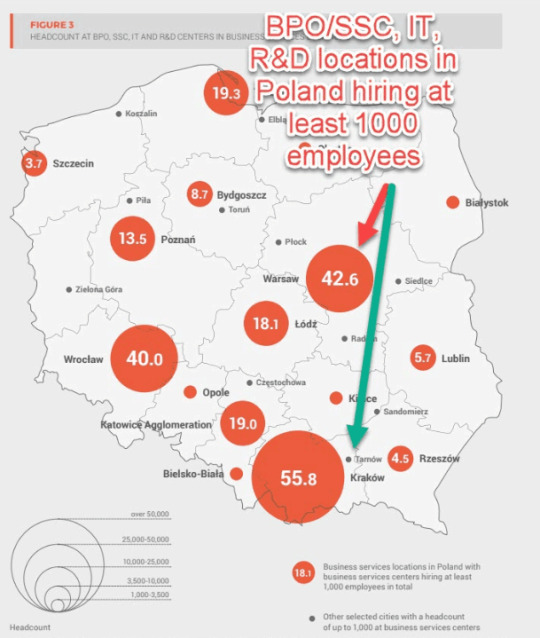
Top cities of the future: Krakow ranks 9 in FDI’s report European Cities and Regions of the Future 2018/19. FDI is a service developed by the Financial Times, providing industry-leading insight and analysis, mostly investment-related.
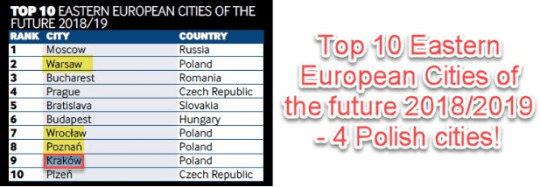
Business-friendliness - Krakow ranks second in FDI’s report European Cities and Regions of the Future 2018/19
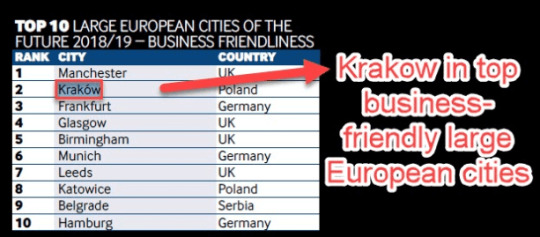
Krakow ranks 6th in Tholon’s Services Globalization Index. The index analyses the performance of a city based on talent skills, business catalyst, cost, quality of life, digital and innovation
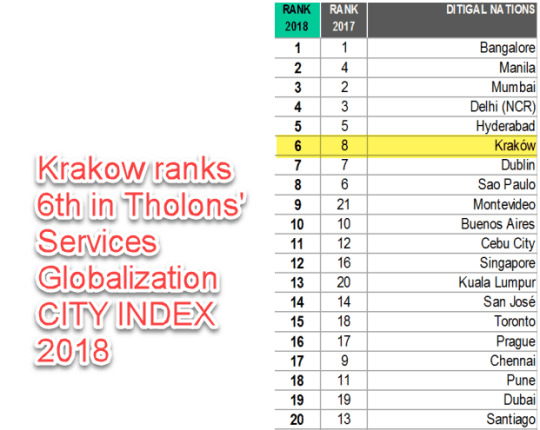
Globalization city index
Local talent pool: the second-highest talent pool in Poland according to McKinsey's report "Poland 2025: Europe’s new growth engine"
High-quality university education. In the QS EECA University Rankings 2018, the Jagiellonian University came in 14th among 200 of the best universities in Emerging Europe and Central Asia region
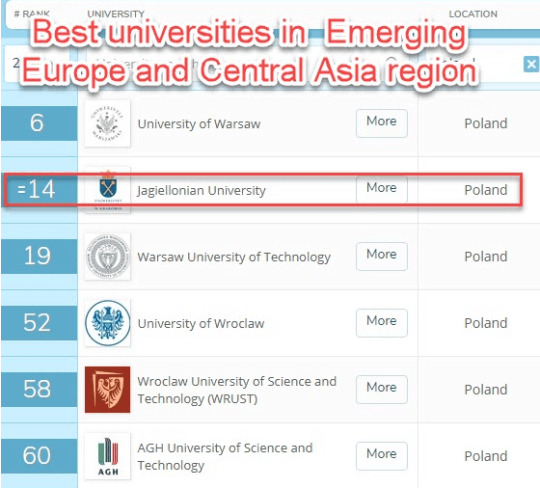
Krakow Technology Park: one of the most innovative R&D centers of its kind. It provides an industrial base for Krakow’s 15 higher education institutions and over 140 research centers. By 2017 the Krakow Technology Park managed to sign up 250 ventures which created 14,700 jobs.
Incubators and accelerators that bring together startups, mentors and investors: Hub:raum by Deutsche Telekom, KPT Scale Up
Important tech conferences are held in Krakow:
ACE! largest regional conference in Central Europe for building software
Digital Dragons, the leading game industry event in Europe
Cloud Developer Days
Devoxx, a developer community event
100+ tech meetup groups, with more than 100 members
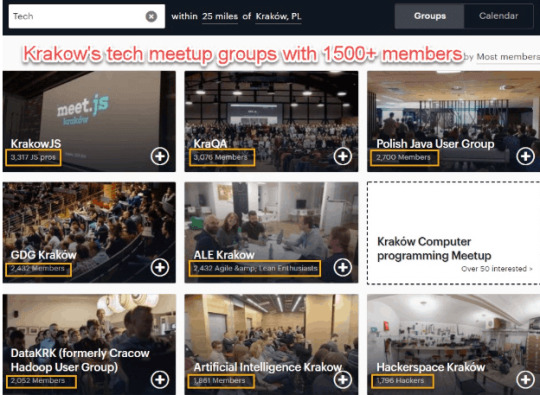
Now that we've got the Krakow IT story covered, we can move on to our software houses.
Codete - IT consulting and software development for digital business
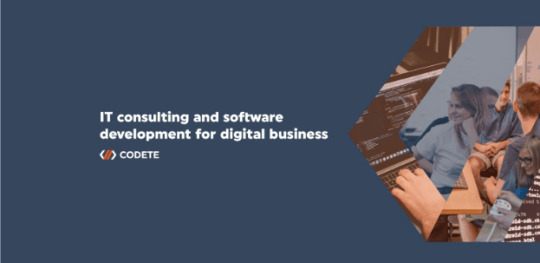
Website: https://codete.com/
No. employees: 120+
Technologies: Java, Scala, AI, Blockchain
Services: DevOps, cloud computing, blockchain, big data, quality assurance, data security
Verticals: e-commerce and retail, travel, health, advertising, automotive, logistics, media, entertainment, fintech, crypto
Key clients: Leonardo Hotels, BMW, Home24.de, Wells Fargo, Total Fyber, KIA Motors, Probooking, Prosieben, Deloitte, Cisco
Offices: Krakow, Lublin, Berlin (HQ)
Managing Director: Artur Olechowski
Based in Berlin, but with Polish roots, it’s no wonder that Codete has among its clients, lots of German companies.
While many software houses in Poland go for North-American, Canadian, Scandinavian contracts, Codete doesn’t shy away from other markets.
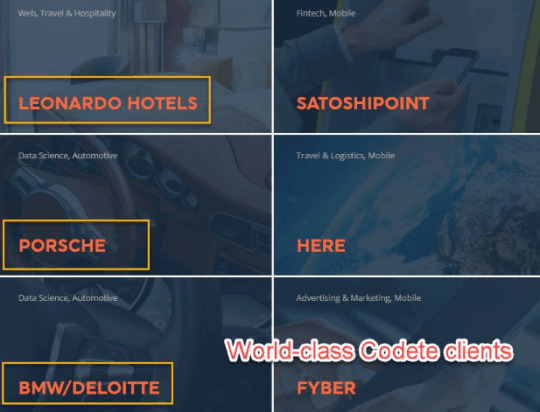
With a portfolio with world-renowned clients, a continuously growing website traffic and being the host of a plethora of tech events, Codete can be an inspiration for every Polish software house.
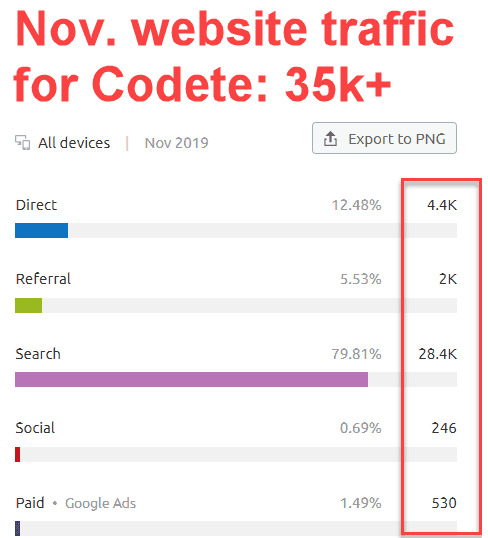
Sharing IT knowledge is at the core of Codete’s existence: from CodeteCON, the tech conference, to meetups and workshop hosting, Codete understands how leadership is born.
It’s all about building trust and a thriving community around you, educating the stakeholders.
But, if you want to find out more, you’ll have to keep an eye on our next blog post.
Miquido - Building AI-powered digital products supported by data science
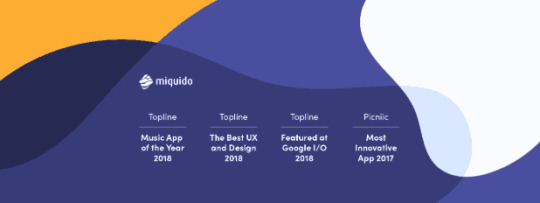
Website: https://www.miquido.com/
No. employees: 150+
Technologies: Java, Angular, Flutter, Swift, Kotlin, React Native, Angular, Golang, AWS, Kubernetes, Azure, Machine Learning
Services: software development, quality assurance, UX/UI wireframing, product design
Verticals: business, fintech, consumer goods, tourism, healthcare, social media
Key clients: Skyscanner, TUI, Aviva, Nestle, Herbalife, Santander
Offices: Krakow (HQ), London, Berlin
Reviews: 4.7 - Clutch (14 reviews)
CEO: Krzysztof Kogutkiewicz
One of the youngest companies we’ve analyzed so far, Miquido has been on the market since 2011 and has delivered 90+ apps. And to name just a few of their clients: Skyscanner, TUI, Nestle...

Awarded by Deloitte in 2016 in its Top 50 Fast Technology in CEE (2016 edition), Miquido has an inspirational growth story.
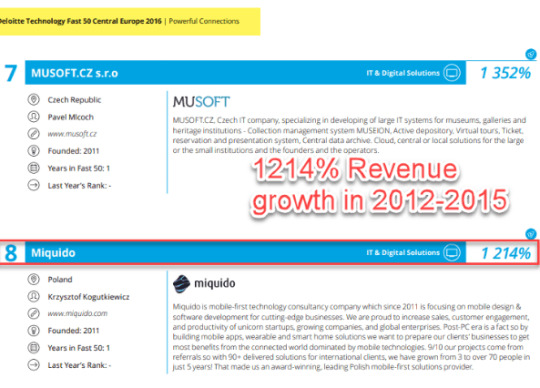
To know their story you’ll have to follow us in our next blog post, where we’ll tackle how Miquido does its inbound marketing, how it builds brand awareness and its social media presence.
Railsware - Great Products, Great Code
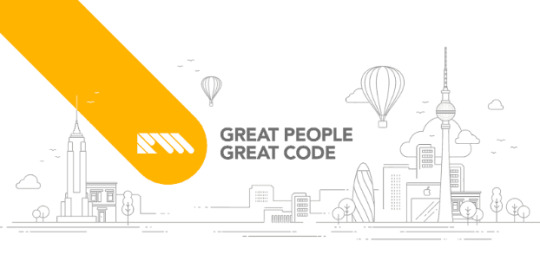
Website: https://railsware.com/
No. employees: 60+
Technologies: Ruby on Rails, Node.js, Angular
Services: mobile development, web development, AI and machine learning services
Verticals: business, fintech, finance
Key clients: Sendgrid, Calendly, Brightbytes, Quorso, Google
Offices: Krakow (HQ), Kiew, New York, Dubai
Reviews: 4.9 - Clutch (10 reviews), 4.9 - Glassdoor (11 reviews)
CEO: Yaroslav Lazor
12 years, projects for 60+ organizations, in 12 countries, collaborations with big names such as SendGrid, Google and Calendly - meet Railsware.

Nominated by The Manifest as a top player in Ruby on Rails development, Railsware is a software house with an inspiring growth story.
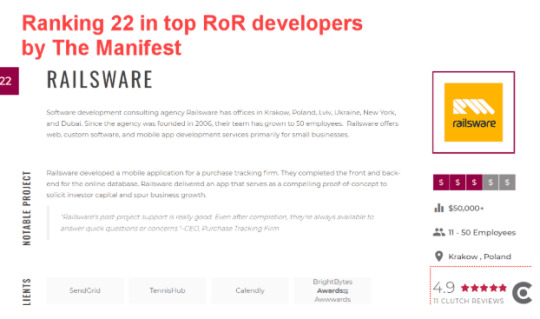
To know their story you’ll have to follow us in our next blog post, where we’ll tackle how Railsware does its inbound marketing, how it builds brand awareness and its social media presence.
Wrap up
This was just a glimpse of our 4 blog post series on the thriving Krakow IT outsourcing market.
This is part of a bigger playground, a playground where the rivalry between software houses in Poznan, Warsaw, Wroclaw, and Krakow gives birth to innovation and a strong tech community. It’s a rivalry that is shaping cities and mentalities.
But, before getting to the core of the subject, let me give you some spoiler alerts from my research. In short, these are some of my findings:
On the long-term, trying to find new business models from developing one’s own product, might be the best choice. Simply put, outsourcing does not scale. Companies such as Railsware (see Mailtrap) try to move the outsourcing stereotype having more like a SaaS approach. This comes natural, when you have 5+ years history of product development, right?
The power of open-source: you can open up to a whole new audience. Railsware seems to be good at it.
Embrace other types of management. Railsware just went for holacracy, a structure where every employee is involved in the decision-making process
Be all-in for events: from hackathons (the case for Miquido), meetups and workshops (Codete), conferences (Miquido is organizing Mobiconf), be where your stakeholders are: future employees and clients. Don’t forget that real-life connections are really valuable.
Scarce talent pool? Go abroad and hire. As projects come pouring in, why not? (Codete is offering relocation packages for developers from Ukraine)
Employer branding - take it to a whole new level when the competition is fierce. Hire an employer branding specialist if need be, like in the Miquido case.
Are you hooked already?
You can find out more software houses stories about it in our ebook: The Growth Marketing Secrets of Top European Software Houses - Poland Edition 2019
if(window.strchfSettings === undefined) window.strchfSettings = {}; window.strchfSettings.stats = {url: "https://man-digital.storychief.io/krakow-software-houses?id=344473290&type=12",title: "Beyond the Outsourcing Stereotype: Krakow’s Software Houses",id: "4f08255c-5e51-436c-99aa-71482a308009"}; (function(d, s, id) { var js, sjs = d.getElementsByTagName(s)[0]; if (d.getElementById(id)) {window.strchf.update(); return;} js = d.createElement(s); js.id = id; js.src = "https://d37oebn0w9ir6a.cloudfront.net/scripts/v0/strchf.js"; js.async = true; sjs.parentNode.insertBefore(js, sjs); }(document, 'script', 'storychief-jssdk')) from Digital Marketing Automation Consulting | MAN Digital https://mandigitalblog.blogspot.com/2019/12/beyond-outsourcing-stereotype-krakows.html via https://mandigitalblog.blogspot.com/ Read more on our blog MAN Digital MAN Digital Blogger
0 notes
Text
In an Ex-Googler’s Novel, Silicon Valley Runs on Male Ego
The Big Disruption, a satirical novel written by Jessica Powell, Google’s former head of communications, is set inside the lush and bountiful Silicon Valley headquarters of Anahata, a massive, 10-year-old tech giant in love with its own mythology about open-door board meetings and profound yet “napkin-able” ideas. Visionary CEO Bobby Bonilo deploys the company’s vast resources and intellectual firepower mainly to play catch-up with Galt, the hottest startup in the Valley, famous for creating apps and tools capable of “reducing all thought and opinion to easily shareable, bite-sized chunks.”
The parallel to Powell’s real life is obvious. Anahata began as a search engine that couldn’t seem to get social networking right. The company takes a literal shot at the moon. But even though Bonilo seems like an easy match to either Sergey Brin or Larry Page, Powell says she was based in Europe when she wrote the book in 2012 and hadn’t yet met Google’s cofounders in person.
Instead, she says the book’s yogi-CEO, who speaks in cryptic tech koans, was based on a short stint handling PR for the dating-app company Badoo. At the time, Walter Isaacson’s biography of Steve Jobs had just been published, and Badoo employees would consult the book to guide even the most inconsequential product decisions.
Medium
Much like the real-life tech giants, Anahata ultimately attempts world domination, but not out of thirst for money, power, and data. Rather, its ambitions are driven mainly by Anahata’s need to keep Galt from poaching its engineers and Bonilo’s need to feel relevant. Big Tech’s critics may imagine that behind closed doors, executives debate trade-offs between ad revenue and user safety. But inside Anahata, product changes or developments with momentous global impact are the result of petty office politics in a rigid hierarchy that places engineers at the top, product managers somewhere in the lower middle, and legal, HR, marketing, and PR at the bottom. (Policy and ethics don’t even merit a rung.)
Powell hopes her novel will ring true for tech workers. “Fiction that portrayed the Valley was so heavy on dystopias and evil laugh tracks,” she says. “If you're sitting there and you're an engineer working on a cloud storage solution and you hear that your company is doing evil, evil things, how do you even reconcile that? It’s not what you see,” and so “you just completely discount that outside voice.”
Medium published the book online in October and, 100,000 or so readers later, decided to publish it in print—both firsts for the company. Powell wrote the book before rejoining Google in 2012. When Powell resigned from Google in August 2017, she was on the management team reporting directly to CEO Sundar Pichai.
The book touches briefly on racial discrimination in Silicon Valley but mainly satirizes the industry’s treatment of women. Across 90,000 words, there is a single female engineer, who is made to feel unwelcome by the company’s insanely sexist HR practices.
Powell never intended to publish the book under her real name, but her friends told her that the book’s critique about the lack of women in the industry wouldn’t hold much water without her experience. Then The New York Times published an anonymous op-ed written by a Trump administration official tearing into President Trump. Powell realized, “This anonymous thing is played,” which made Medium happy as well. “They had always said don't be dumb. Although they were very kind about it.”
The Big Disruption was written closer to the Arab Spring than the tech backlash—there’s an overseas revolution, but it's driven by a search engine rather than social media. But it predicted one of Google’s many ongoing political predicaments. In the book, an Anahata engineer, a royal prince in exile, is captured in his native country, ruled by an oppressive regime. In order to help the engineer—and get a “democracy uptick” in Anahata’s stock price—Bonilo starts manipulating search results to redirect users in the country to negative stories about the regime. You know, the kind of thing that we now call “fake news.” Would Google ever attempt something similar in the real world? “No, that would be ridiculous,” Powell says.
Even in that instance, however, Bonilo’s move is fueled by his desire to keep up with Galt. The initial seeds of a revolt were fomented by a viral post on Galt’s social network, so if the government is overthrown, “Galt will get all the credit for having spread a revolution and ushering in a new era of democracy,” an Anahata executive named Greg Fischer tells Bonilo. “We’ve done a handful of revolutions now — that’s our space. We can’t let Galt take this by themselves,” Fischer continues. (Fischer is the company’s chief financial officer and corporate affairs officer, who also runs “all the departments — legal, finance, marketing, and PR — that were seen as necessary evils in helping run a large company,” Powell writes.)
In any case, the joke’s on Bonilo because the media loves the story of a tech-enabled revolution toppling foreign dictators, but it doesn’t help Anahata’s stock price, because the market sees no upside in human rights.
Powell uses overdrawn characters and hyperbolic plot to comment on Silicon Valley’s monoculture of thought and the lack of women in tech. But the bits about office culture inside tech giants are actually more chilling. What if the fabric of civil society unraveled not because a CEO wanted to sell more ads but because some engineer wanted to prove that he was smarter than his coworkers?
The book is best when Powell is teasing out the existential dread fueling Anahata’s sense of manifest destiny. Wildly ambitious “quirky” projects like a social car are used to distract engineers from getting bored or jumping ship. At one point, Bonilo tries to hire a fixer during a PR crisis, but the fixer ends up articulating the CEO’s worst fears, telling Bonilo, “You’re so desperate that you gobble everything up, thinking size alone will secure your future. But listen to me when I tell you that you have no future in the future.”
In Powell’s telling, the need to grow is both endless and inevitable. For ad-supported companies, it’s a slippery slope from a search engine to a browser to laying down fiber-optic cable to monetize the developing world. As a real-world example, Powell pointed to reports that Facebook is working on its own cryptocurrency, which means Apple or Google would soon be forced to follow. “Now these companies are so big that they're all watching each other, because they're all in each other's like verticals, even though each one is doing the other's vertical crappier,” Powell says.
Original Article : HERE ; This post was curated & posted using : RealSpecific
In an Ex-Googler’s Novel, Silicon Valley Runs on Male Ego was originally posted by MetNews
0 notes